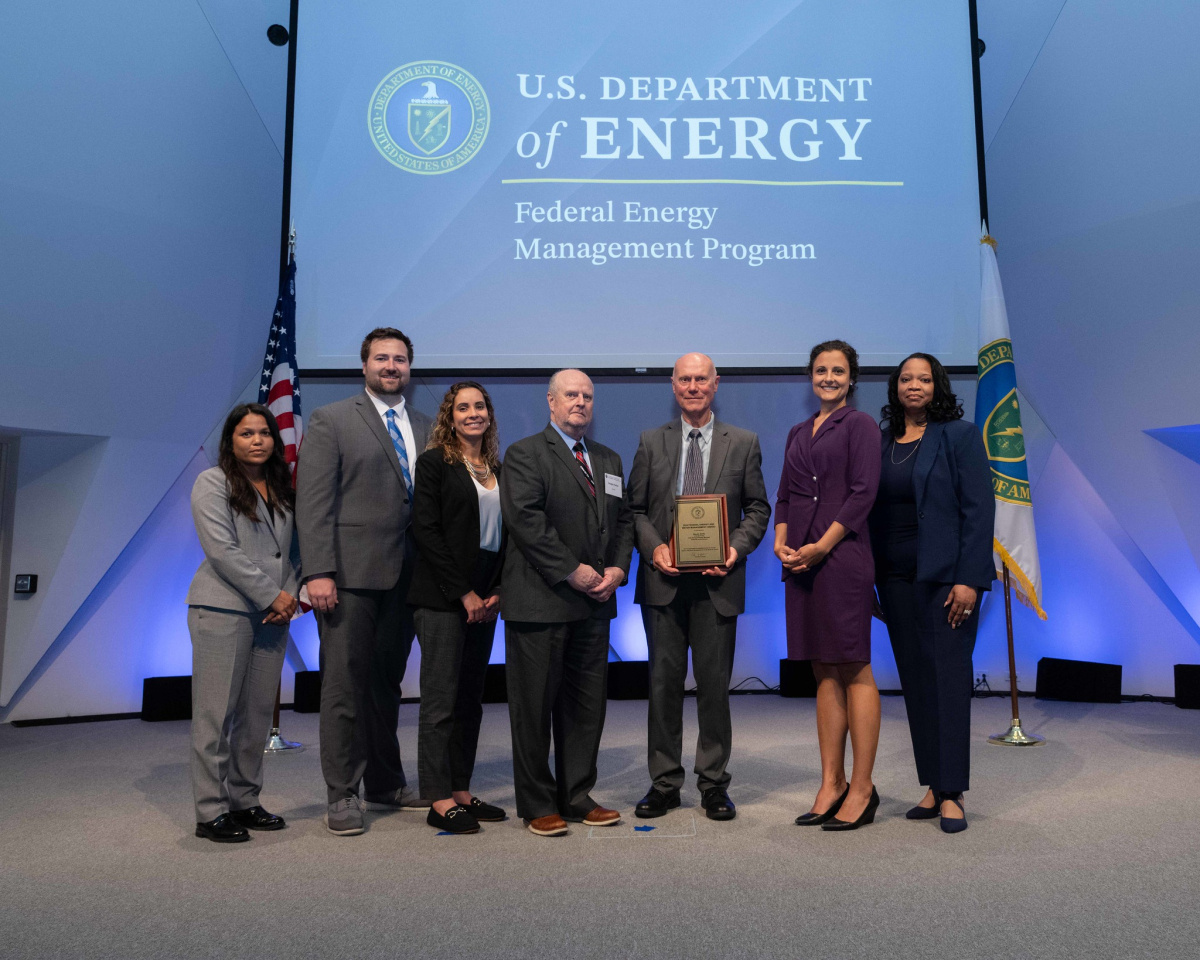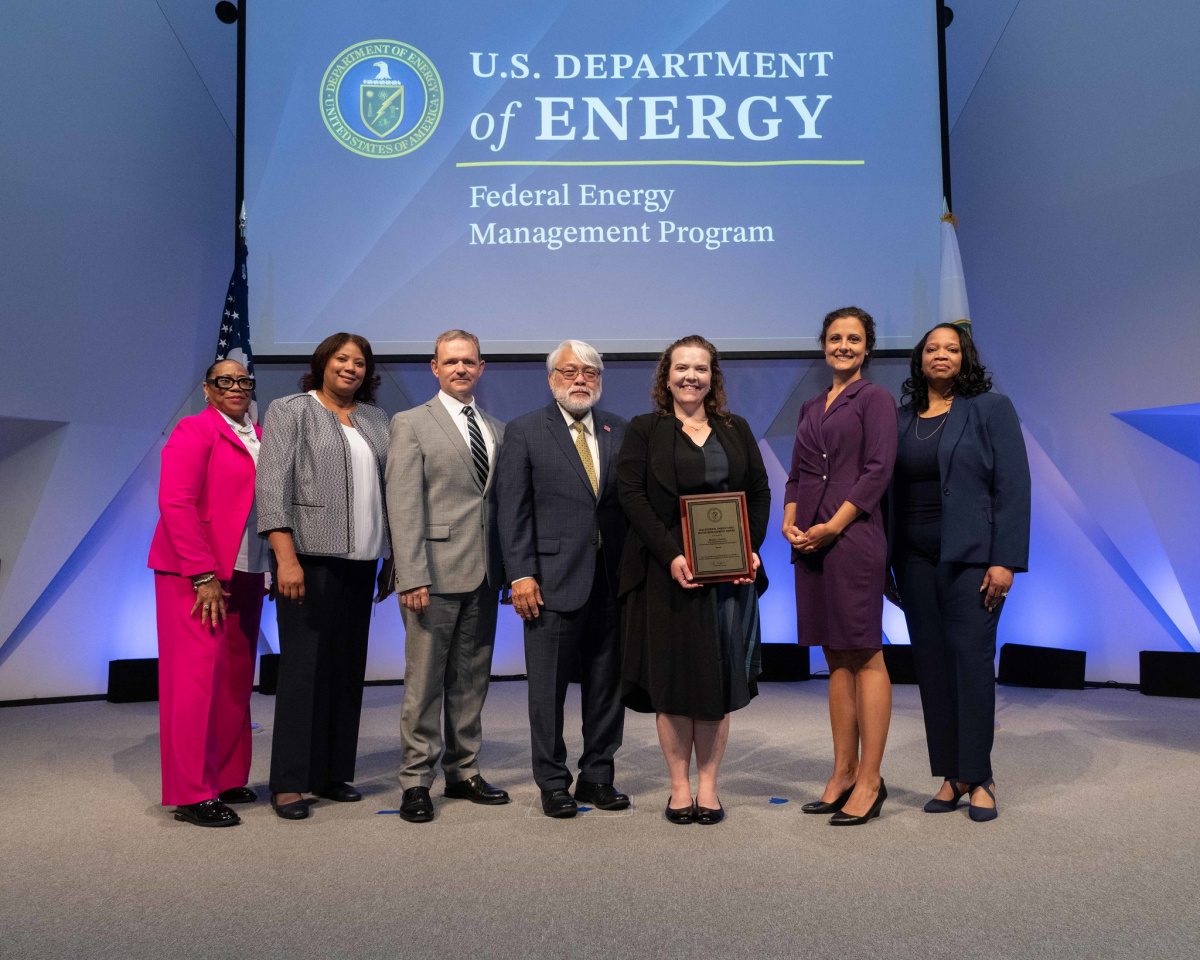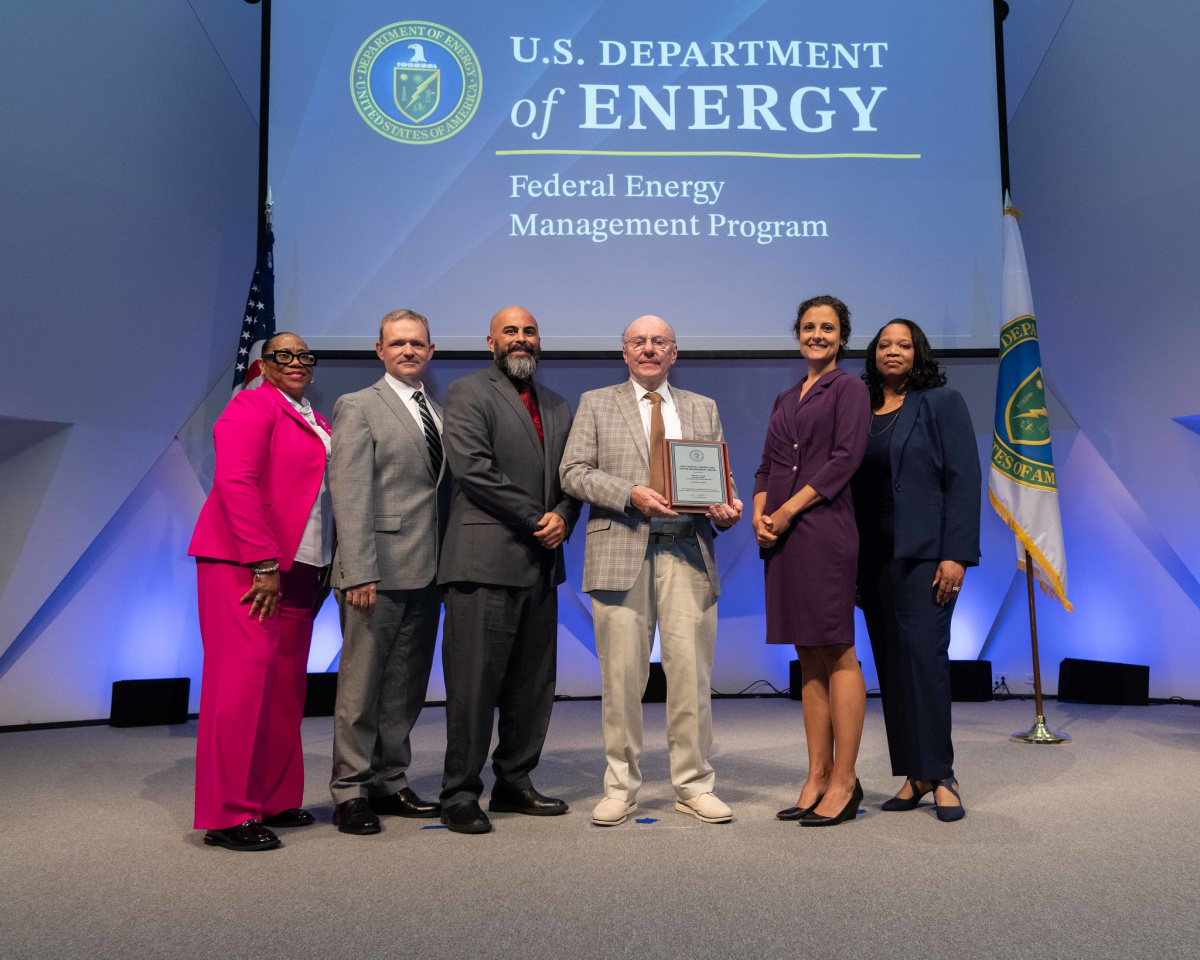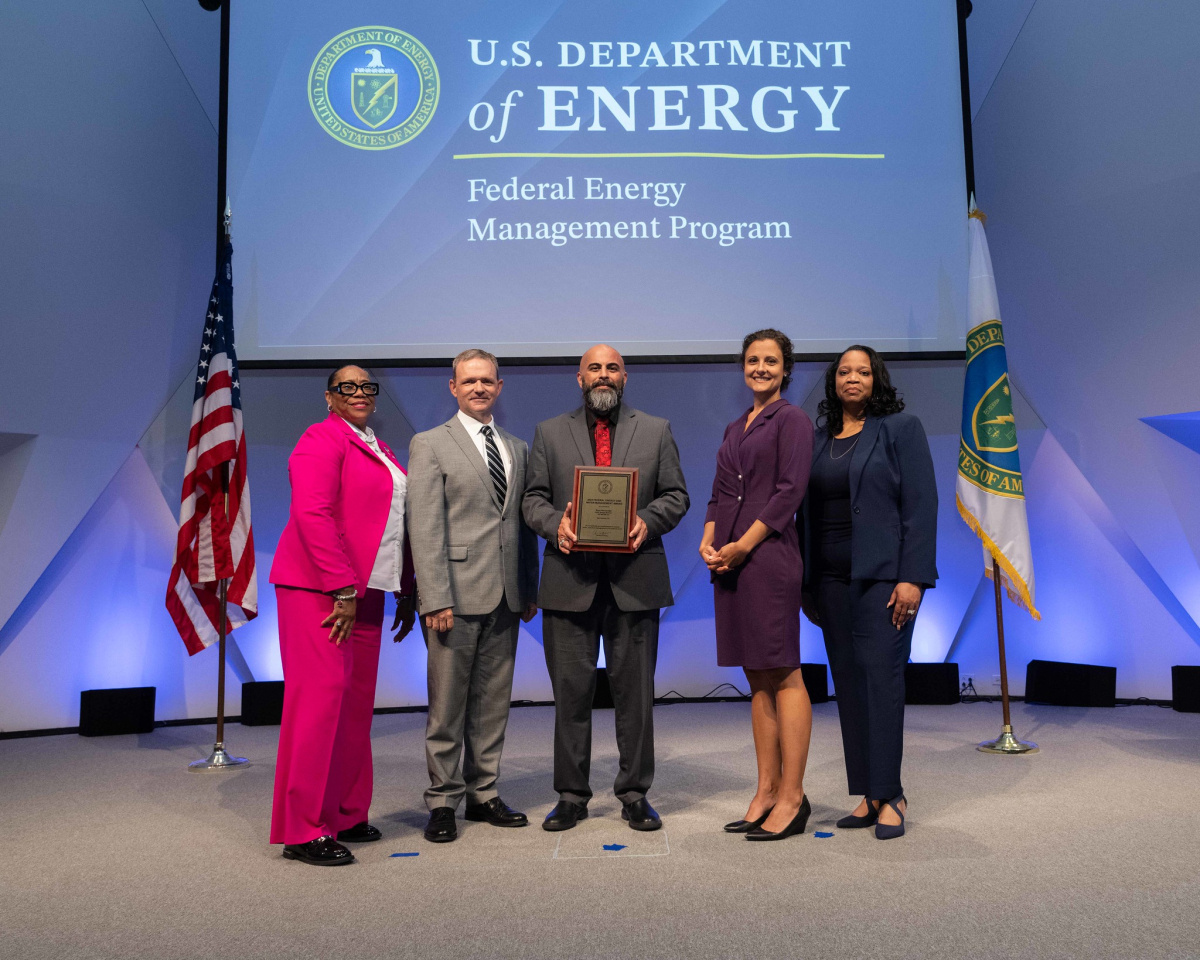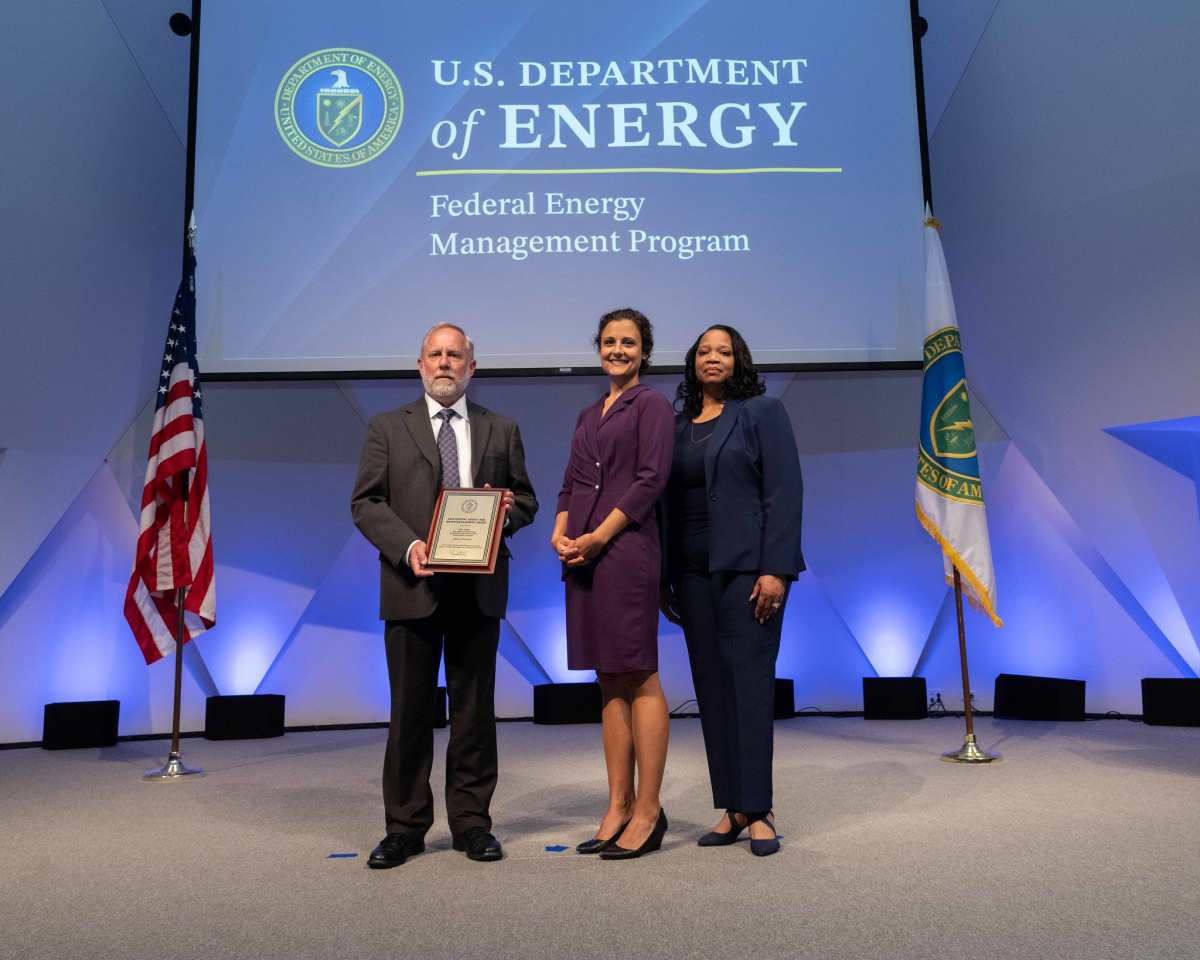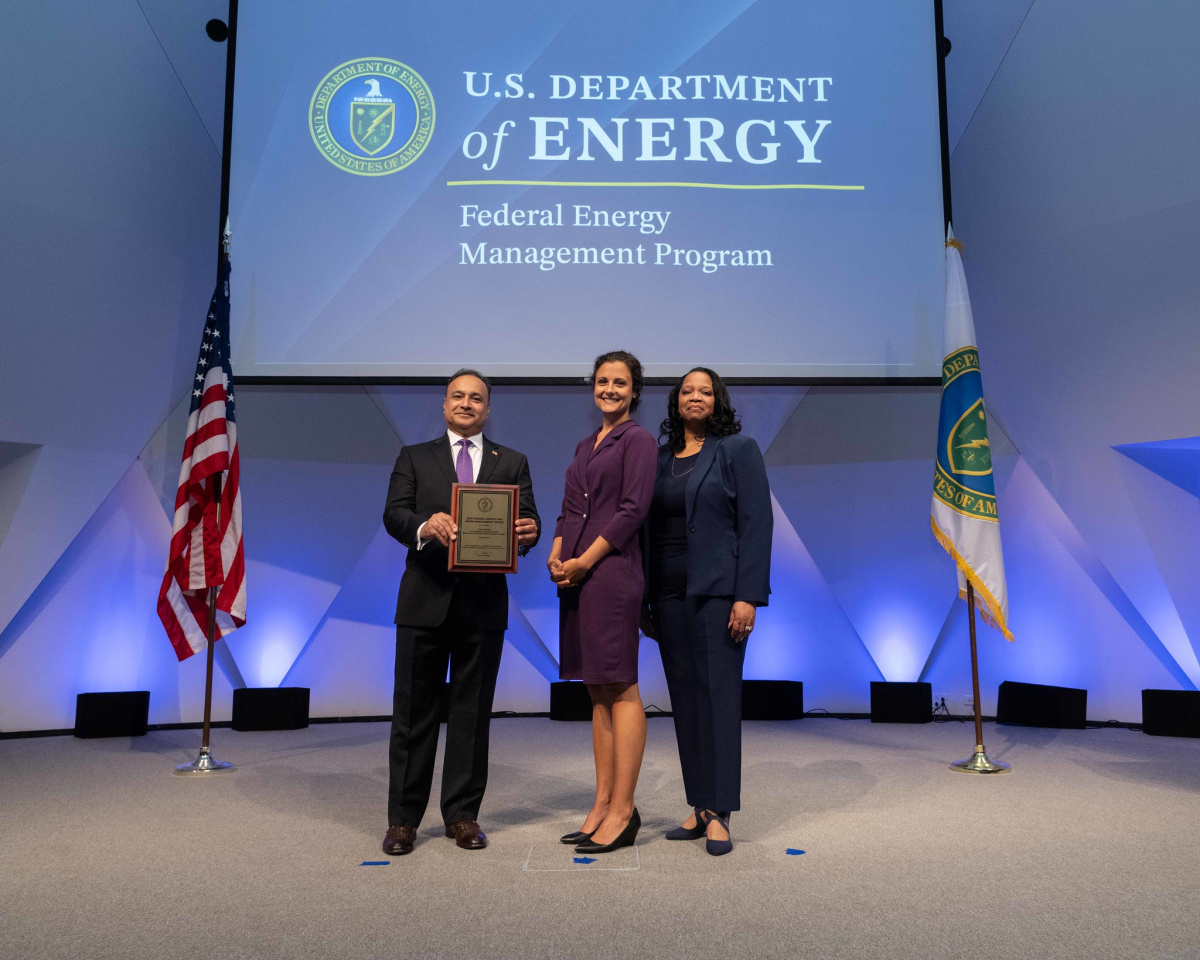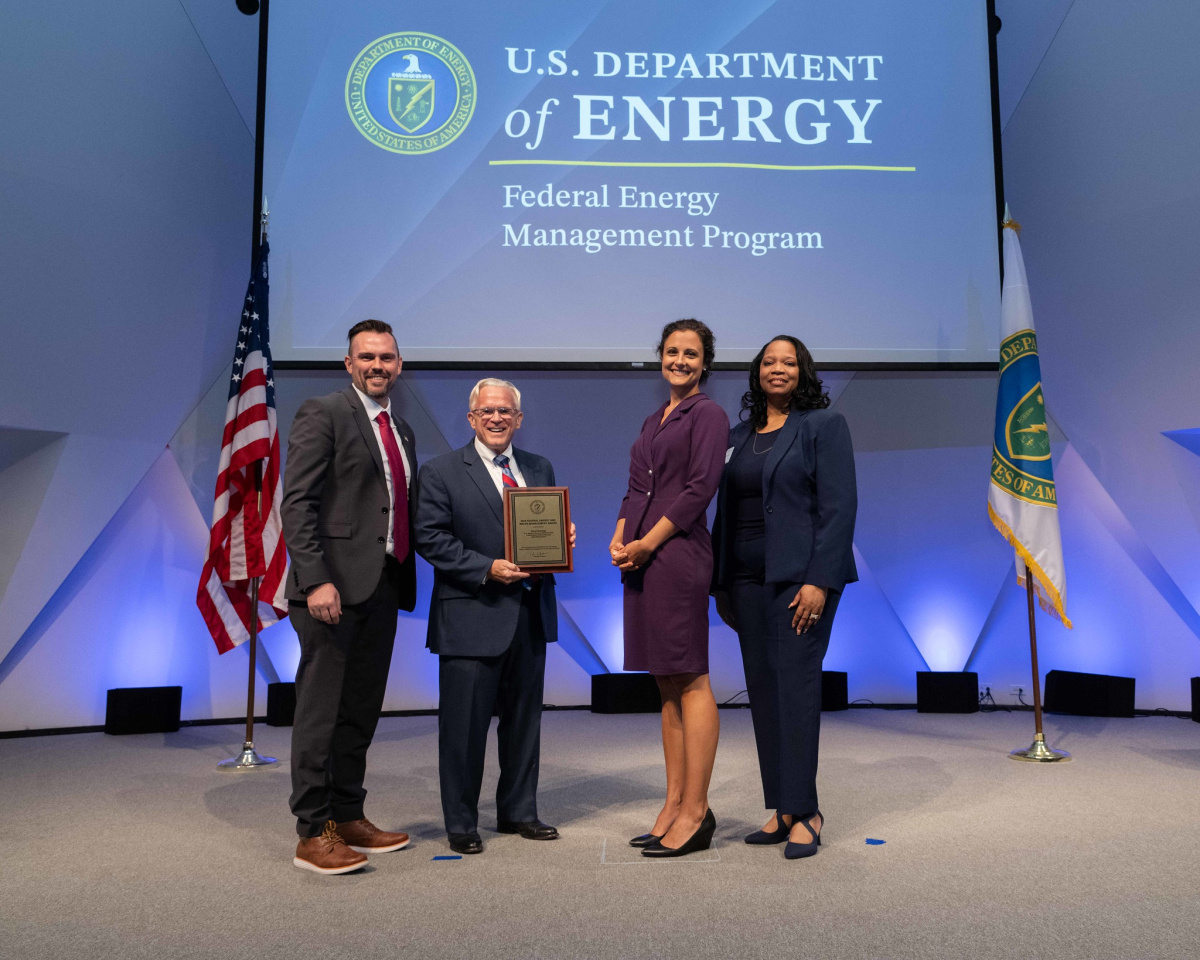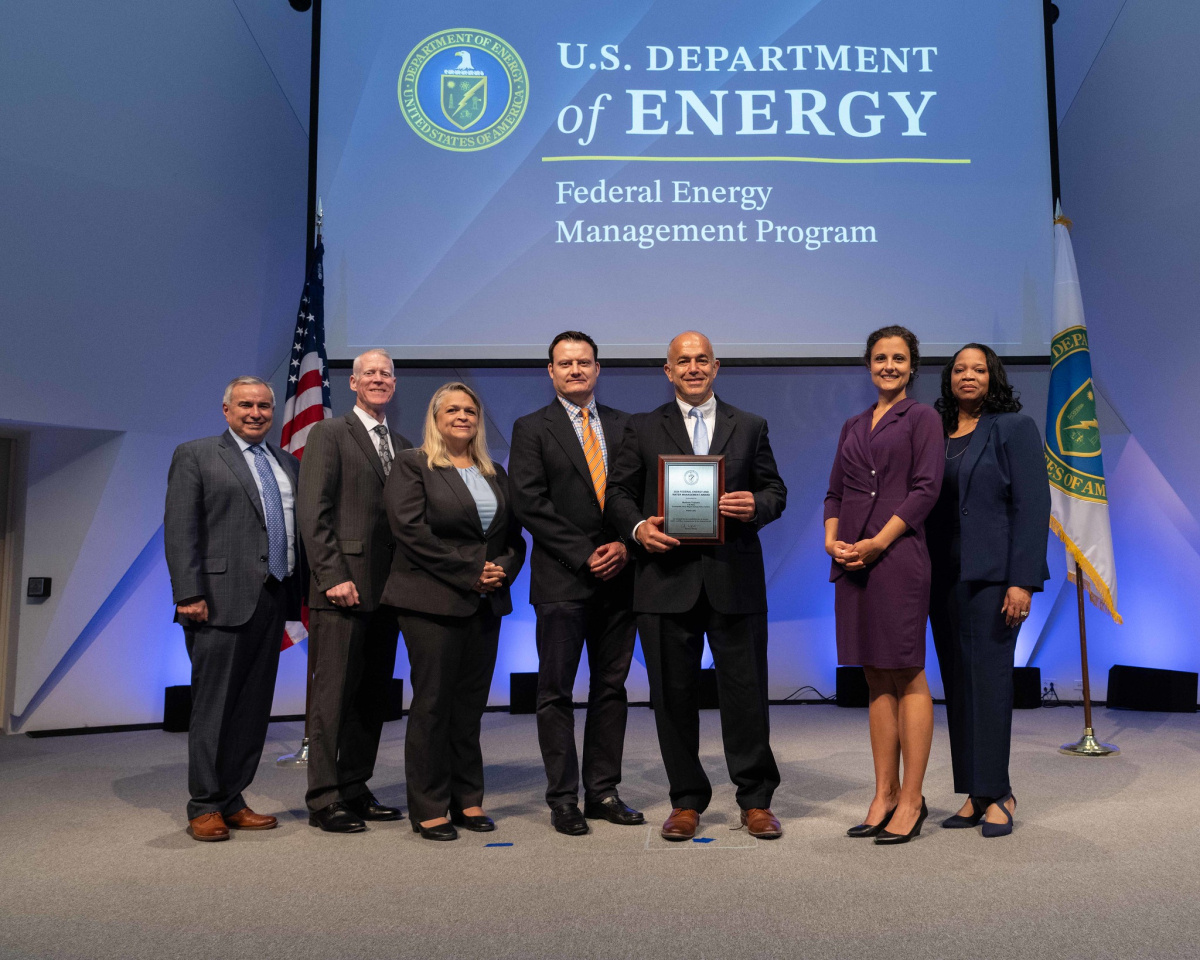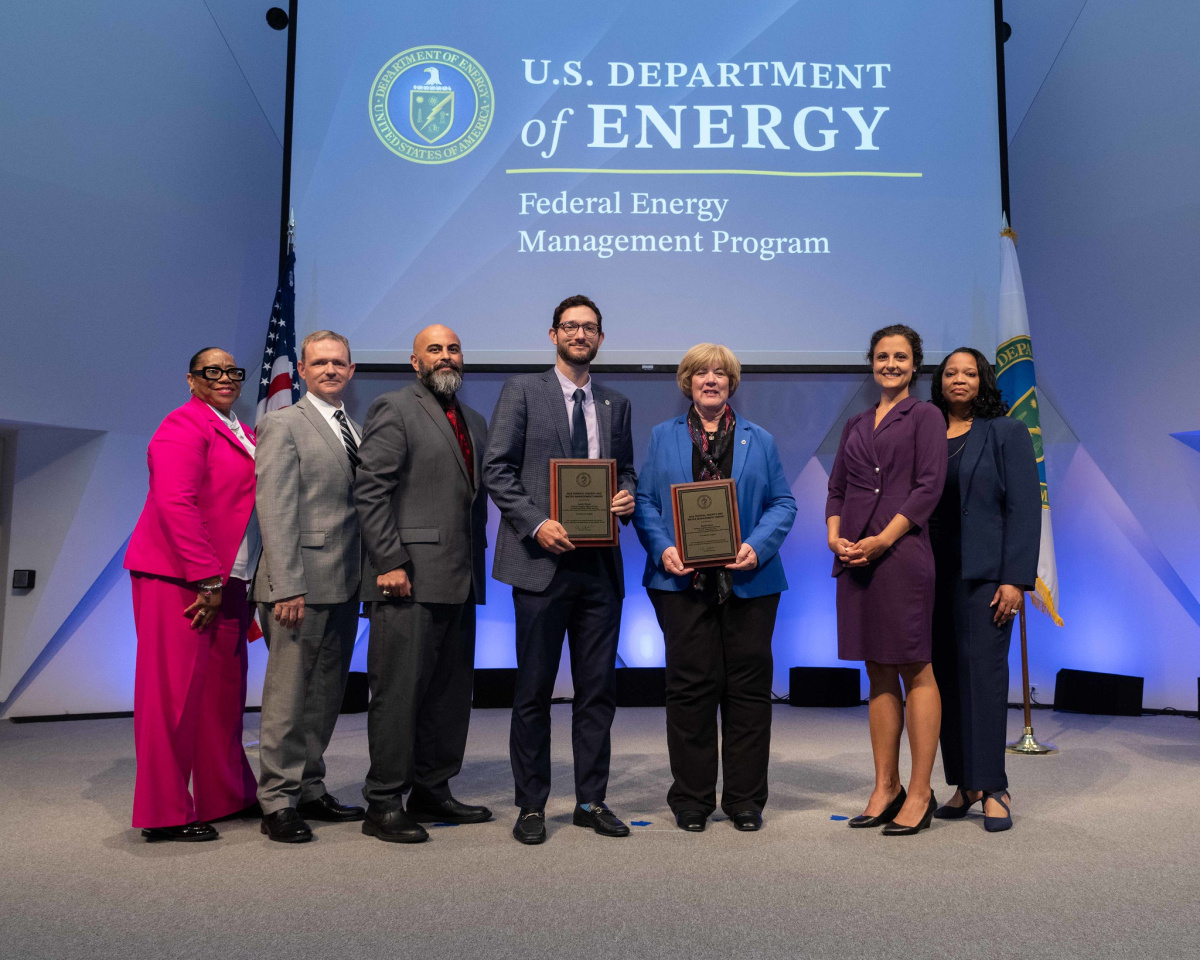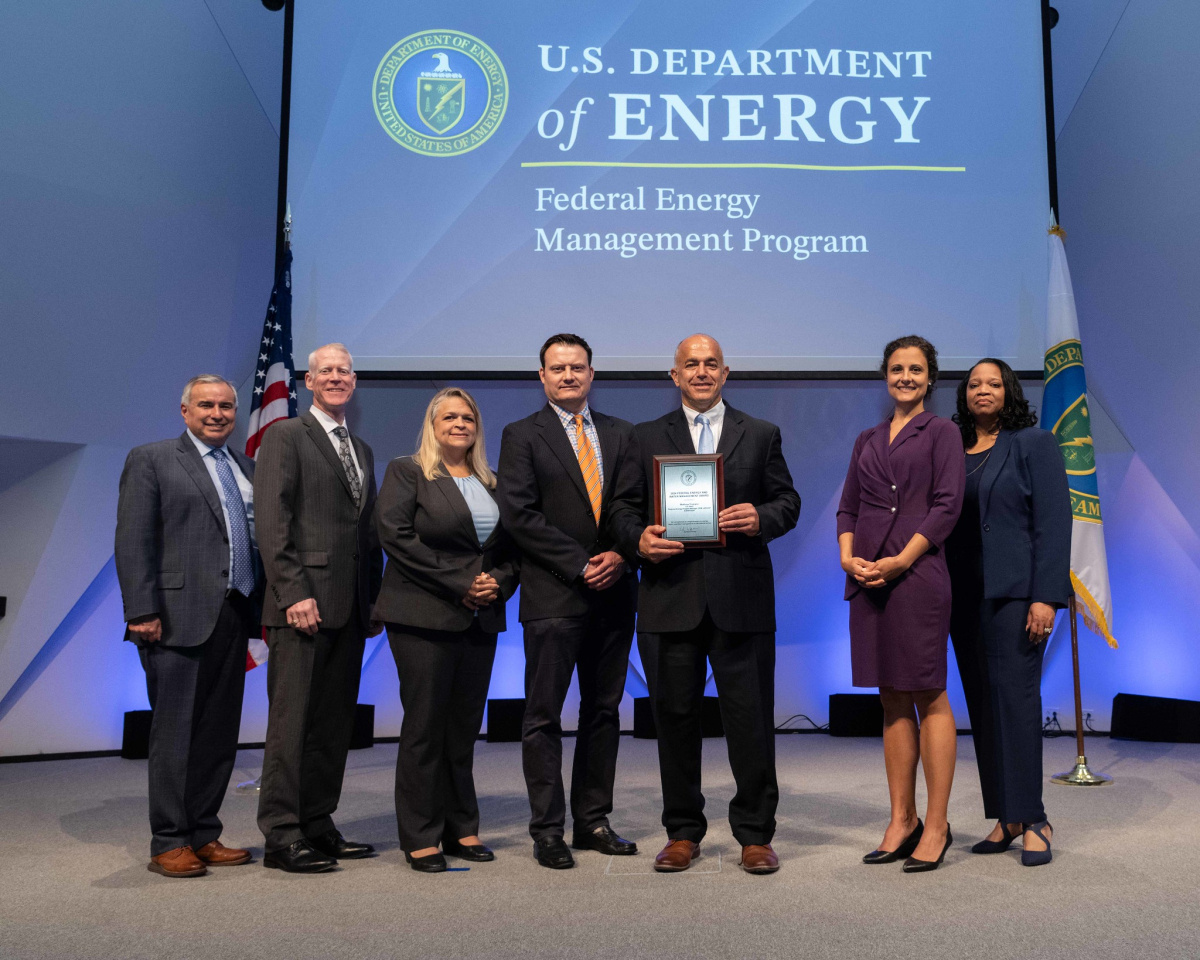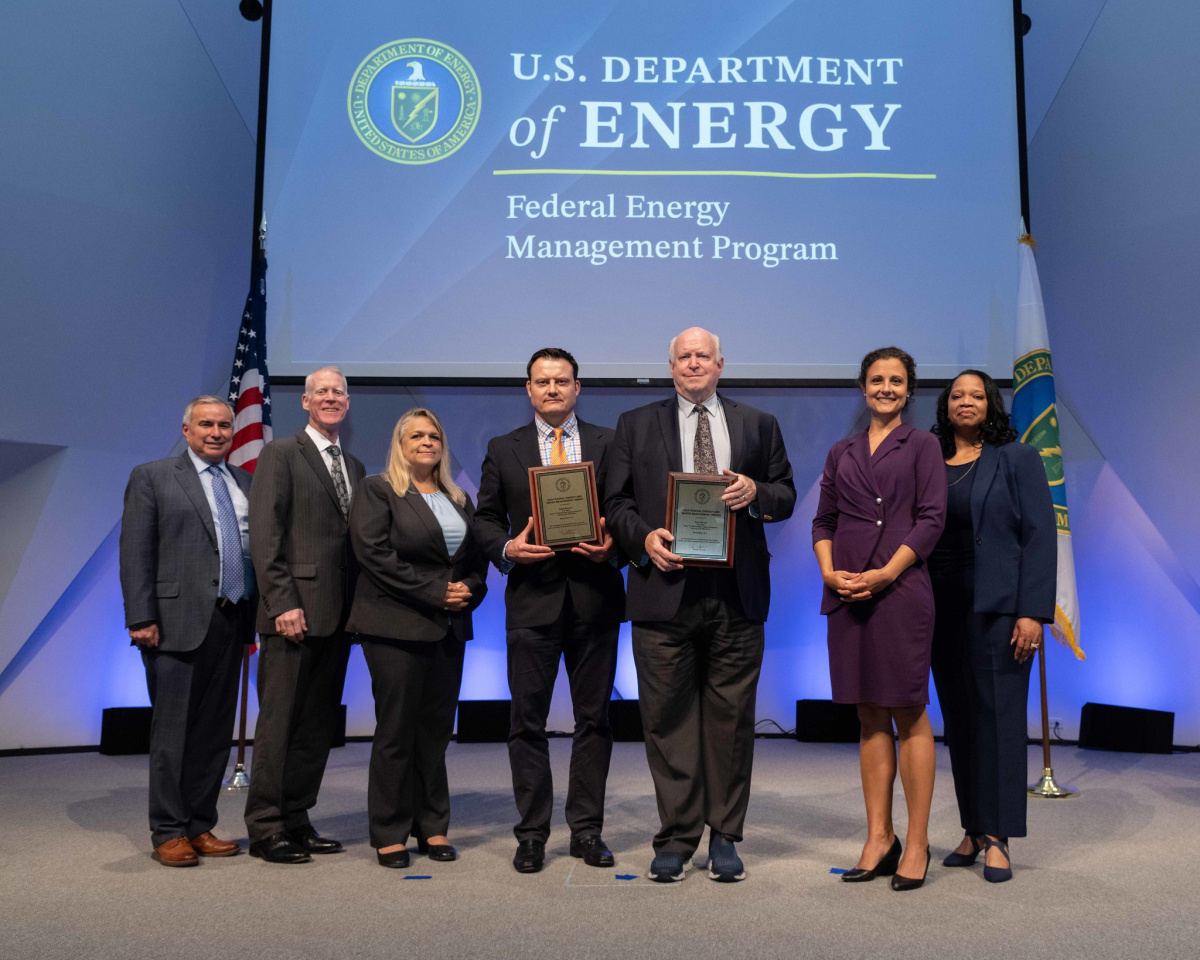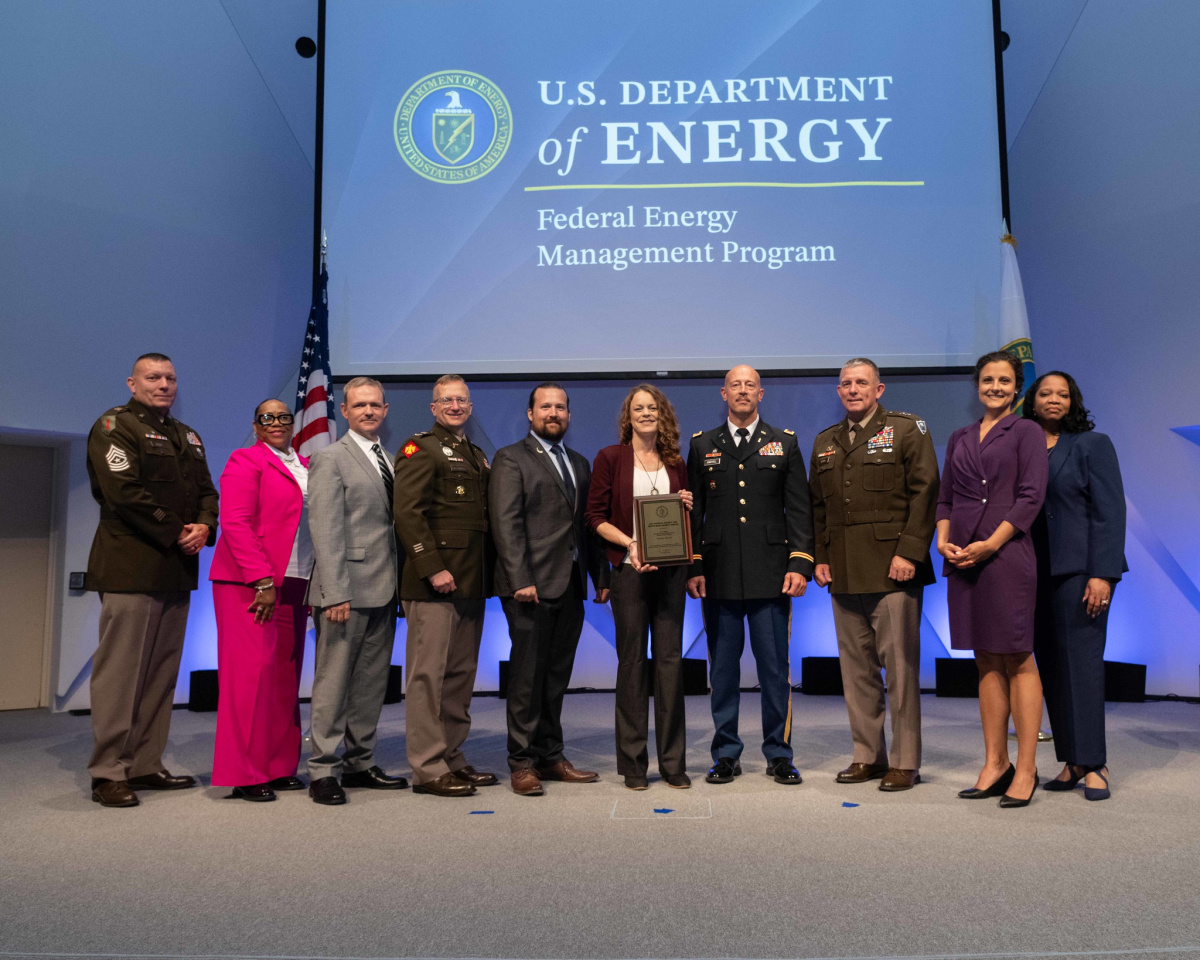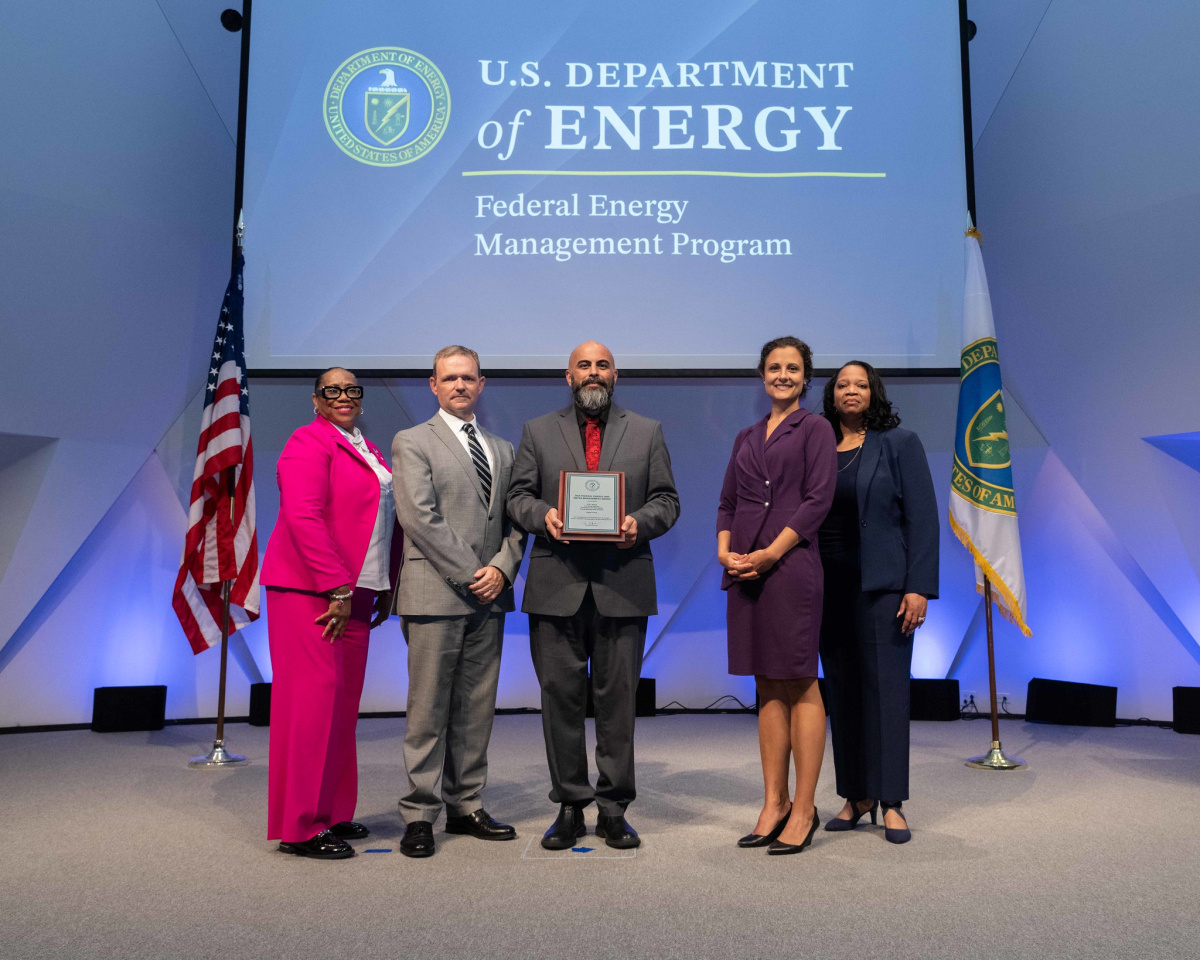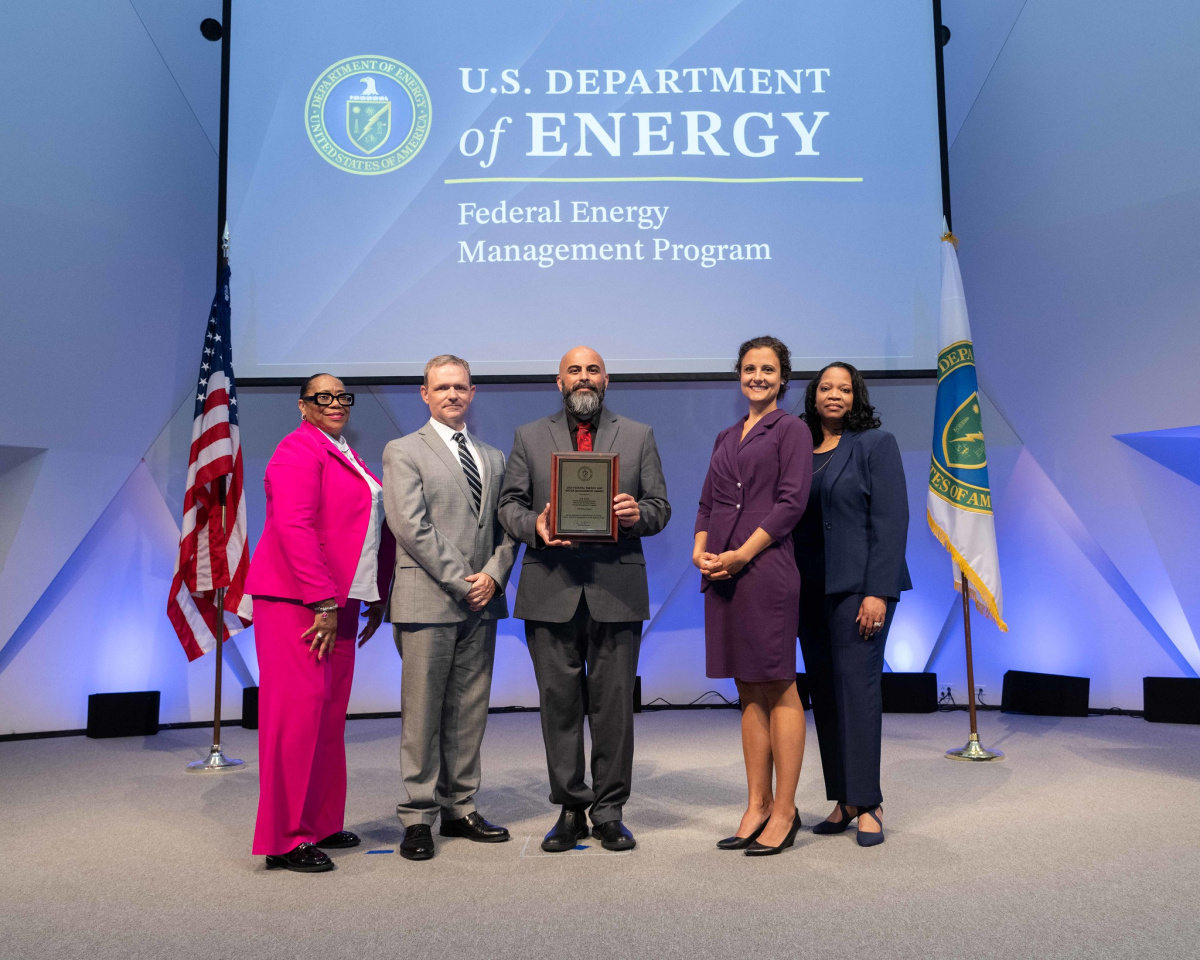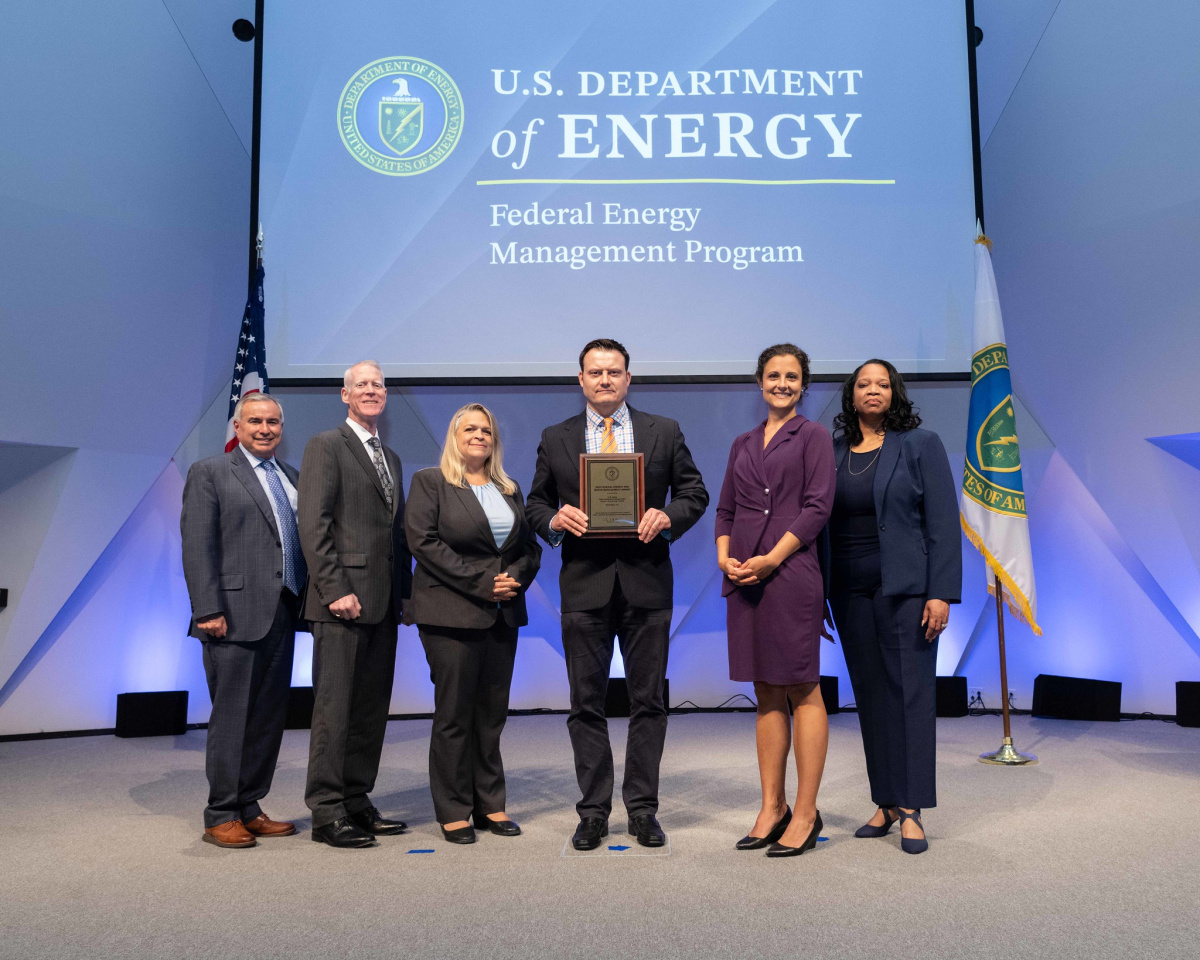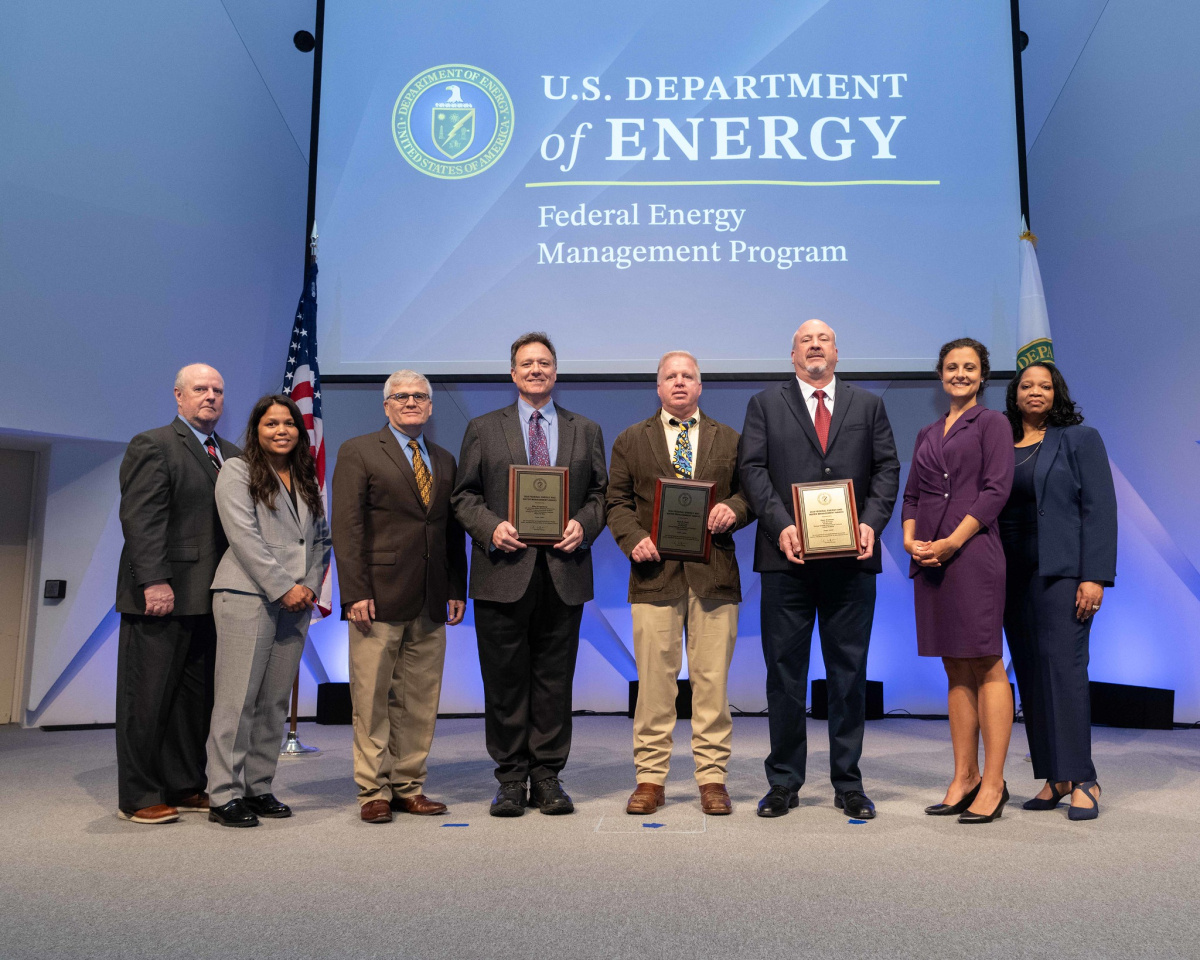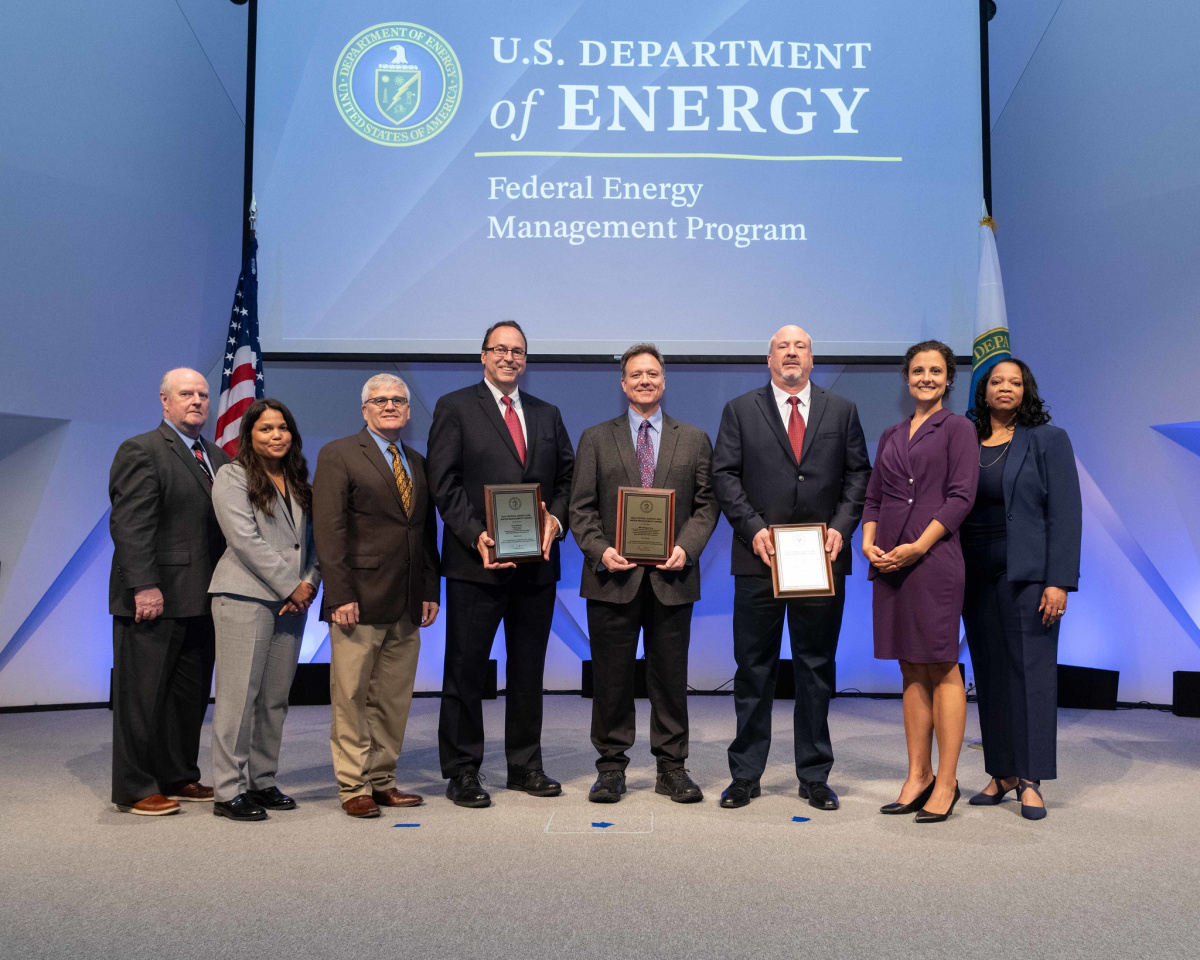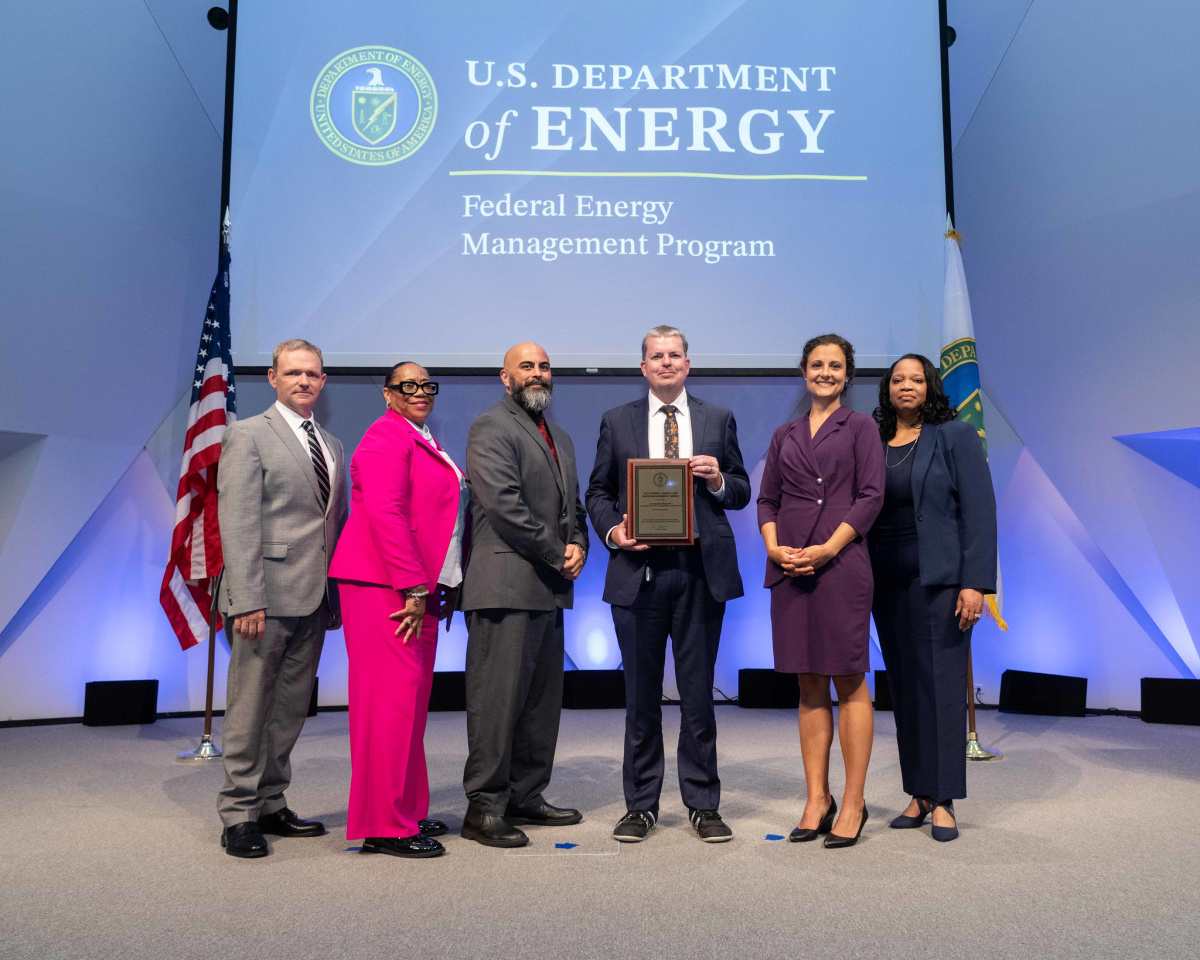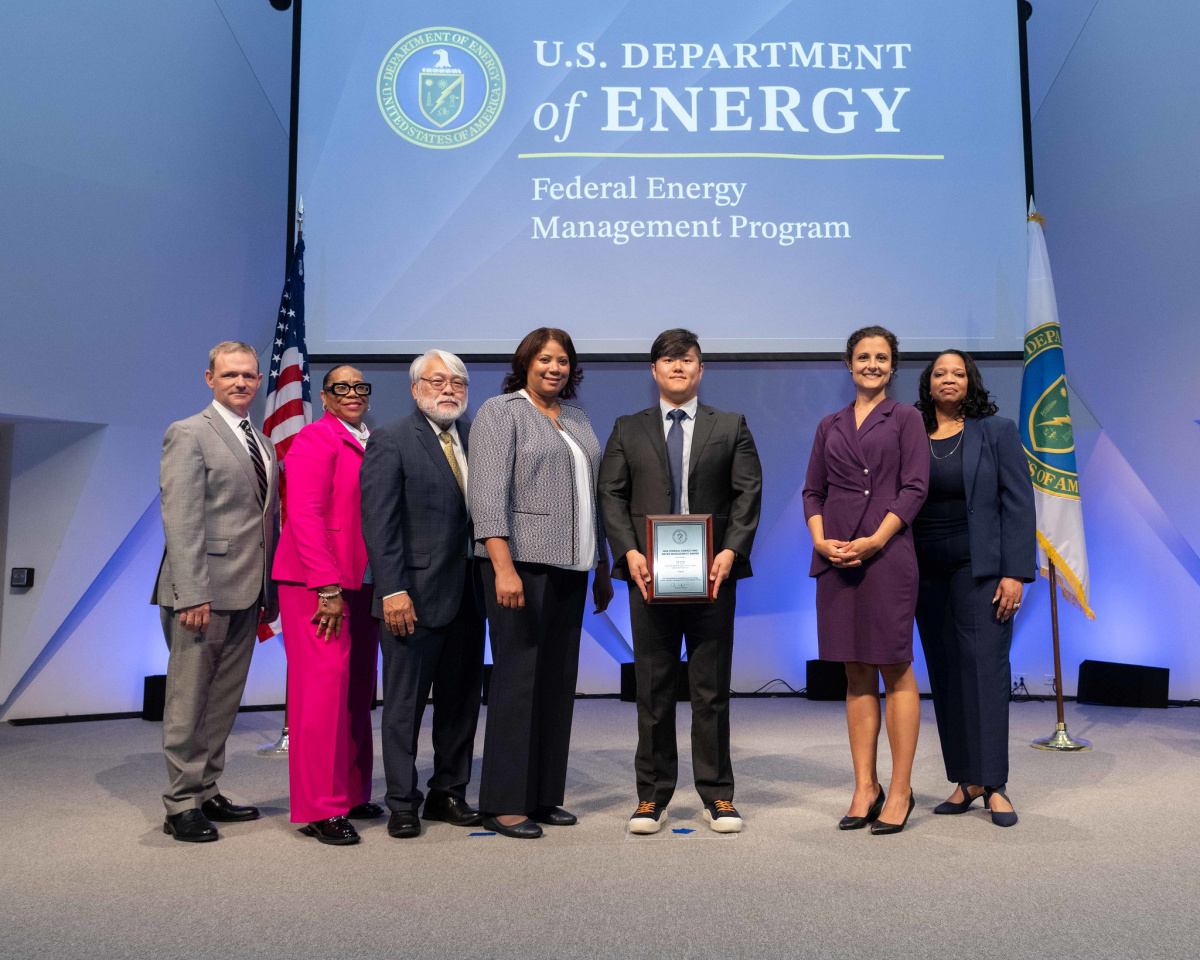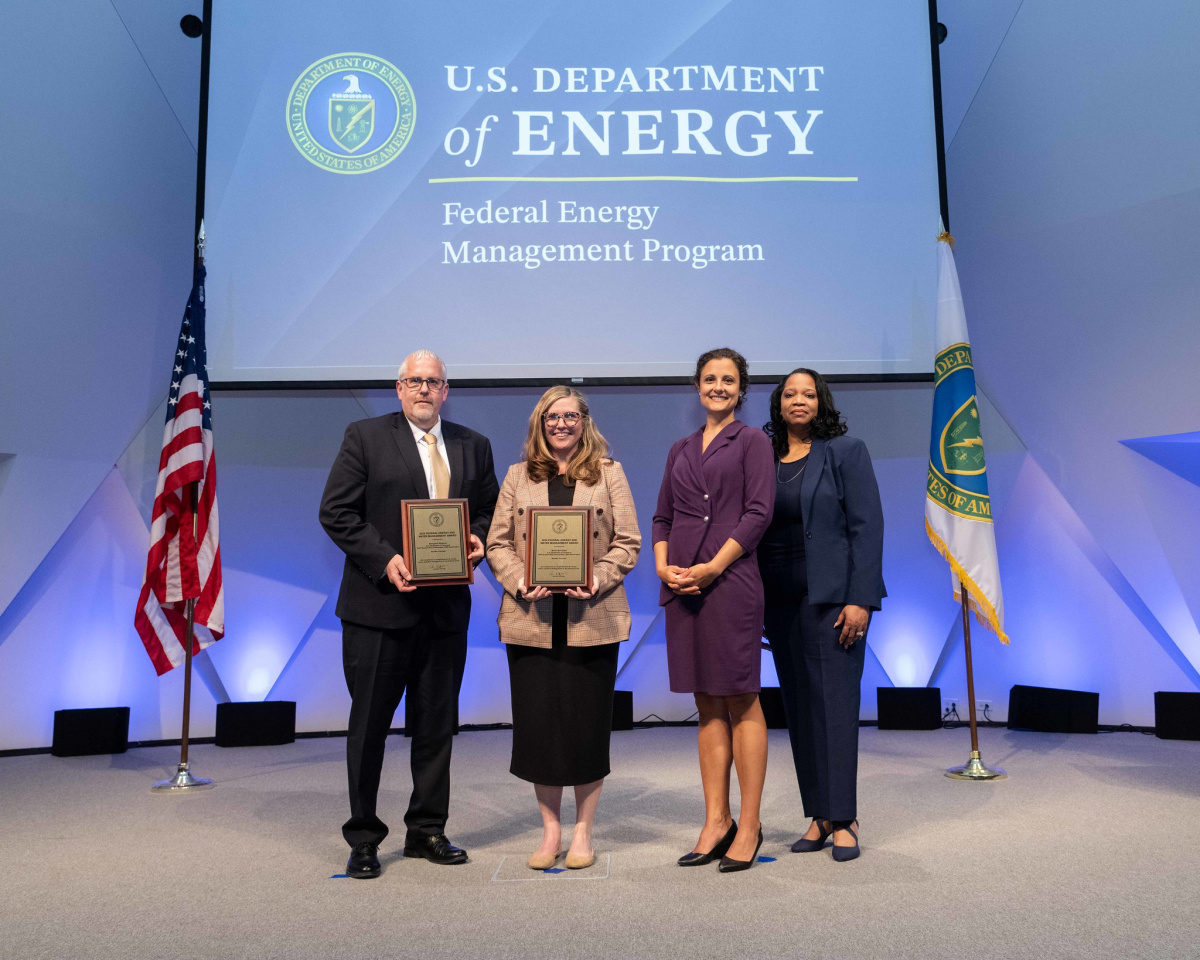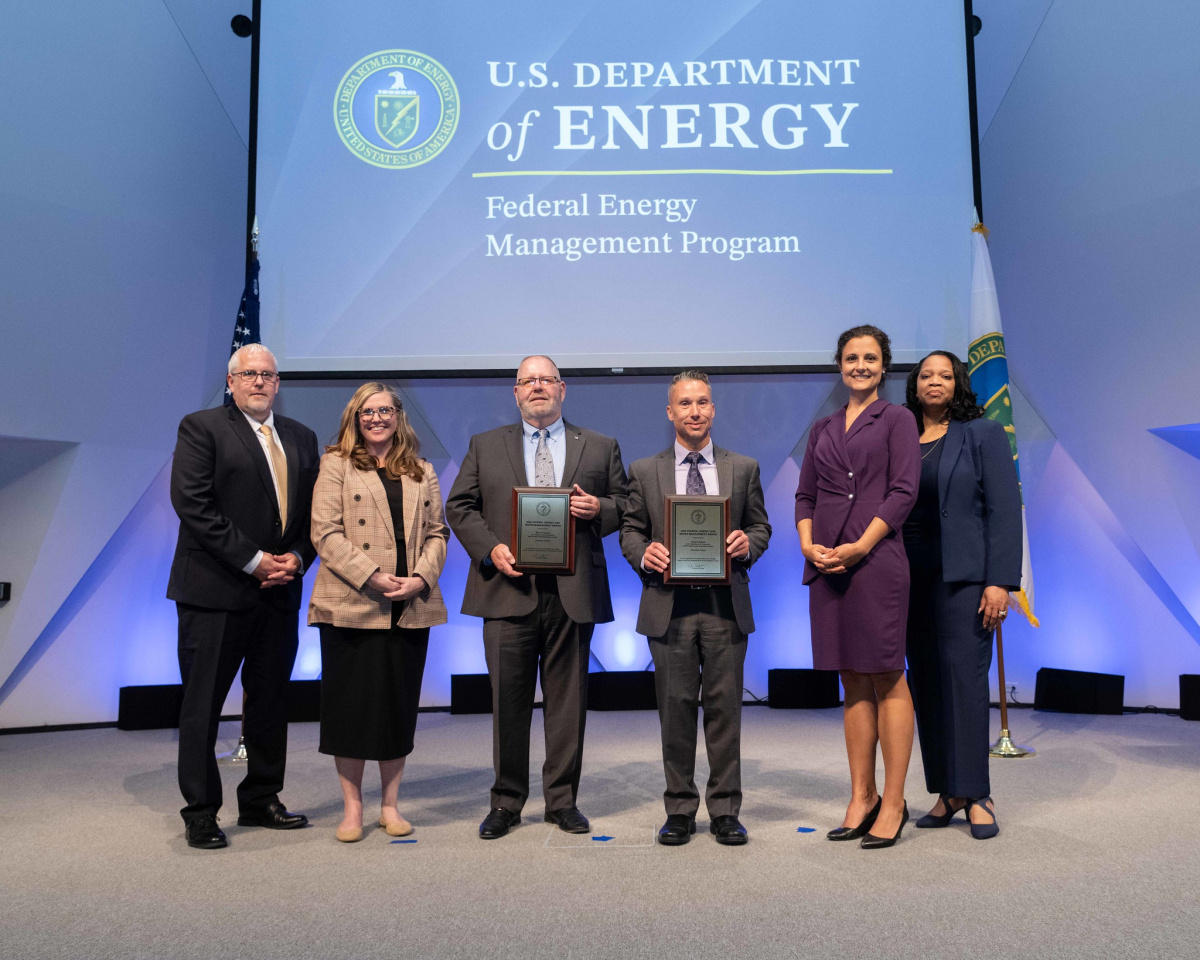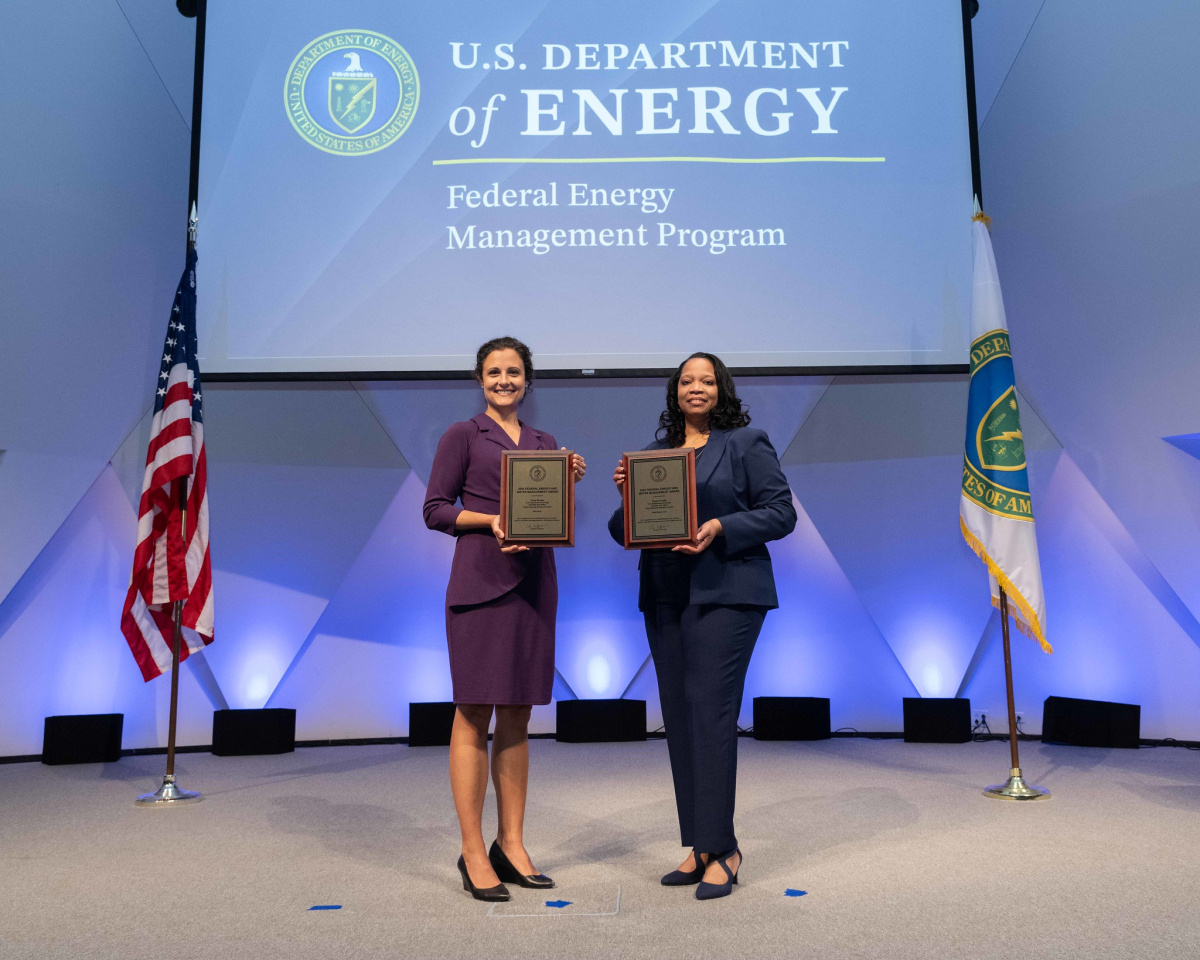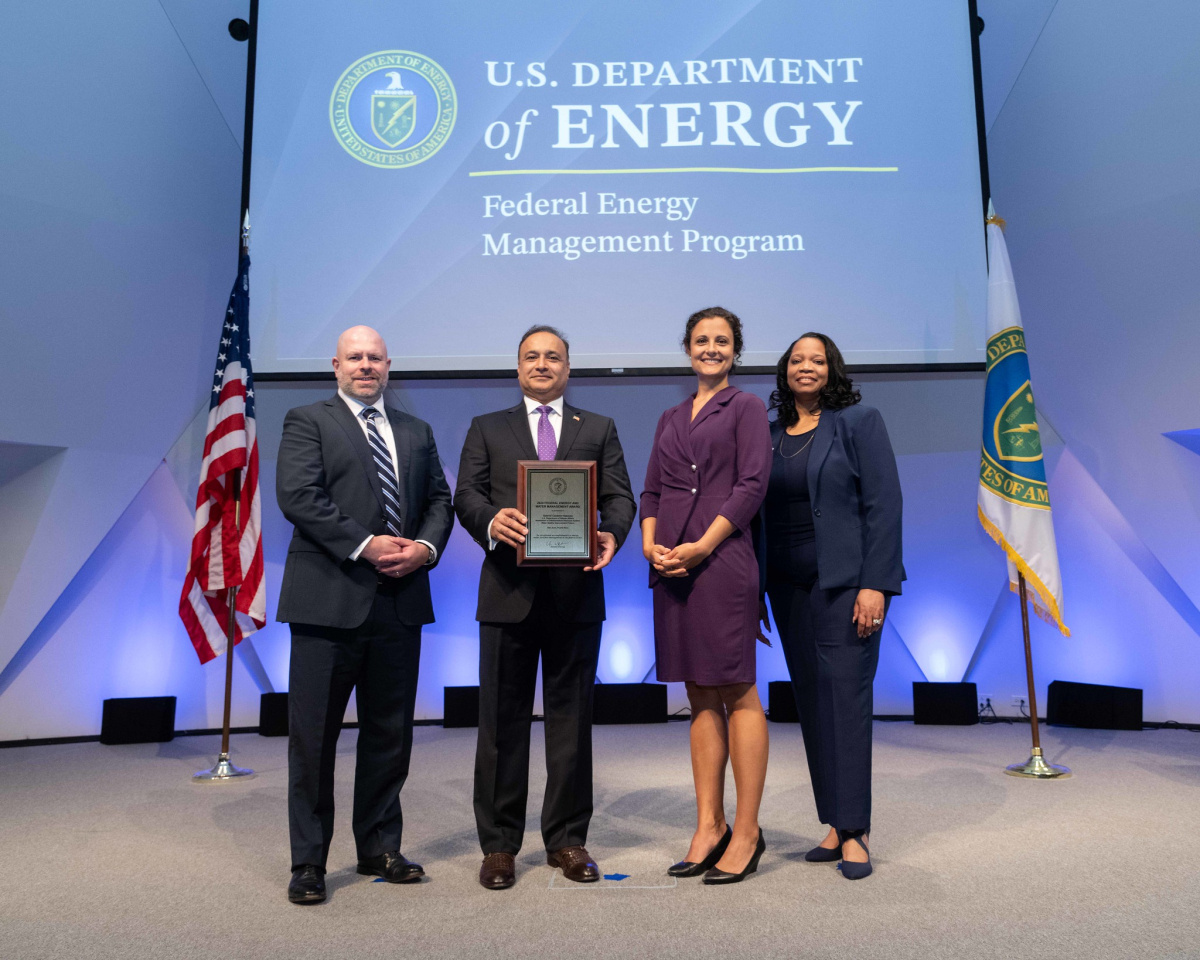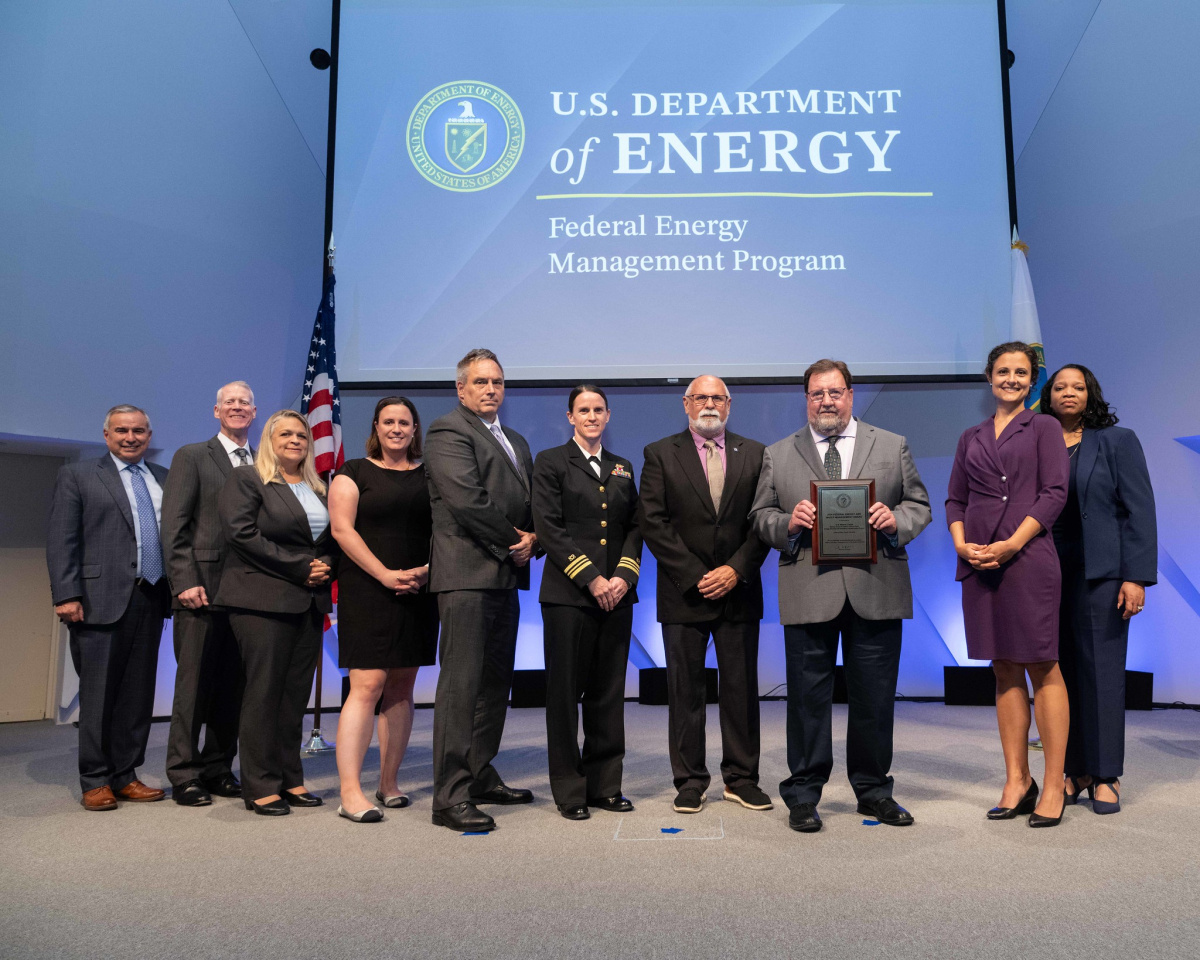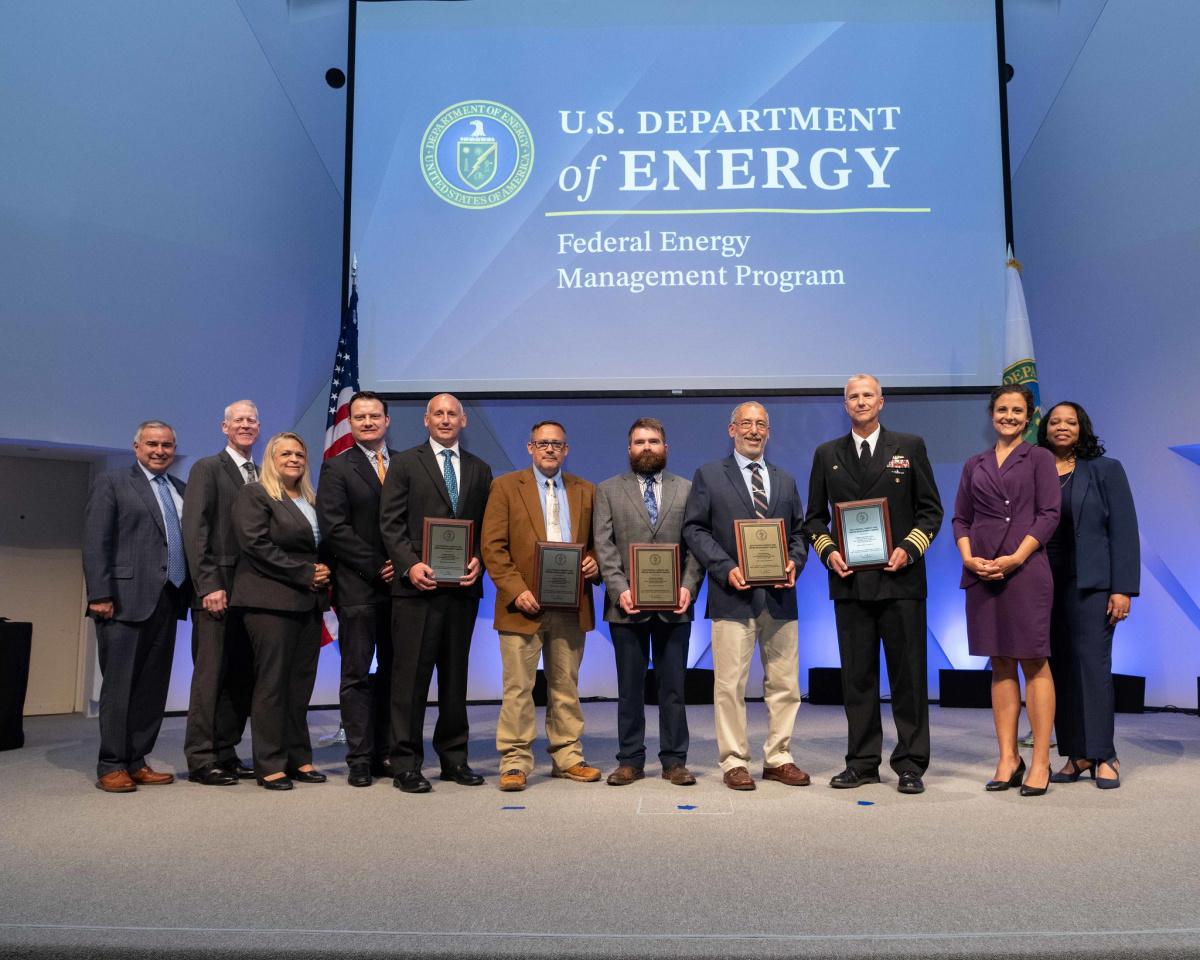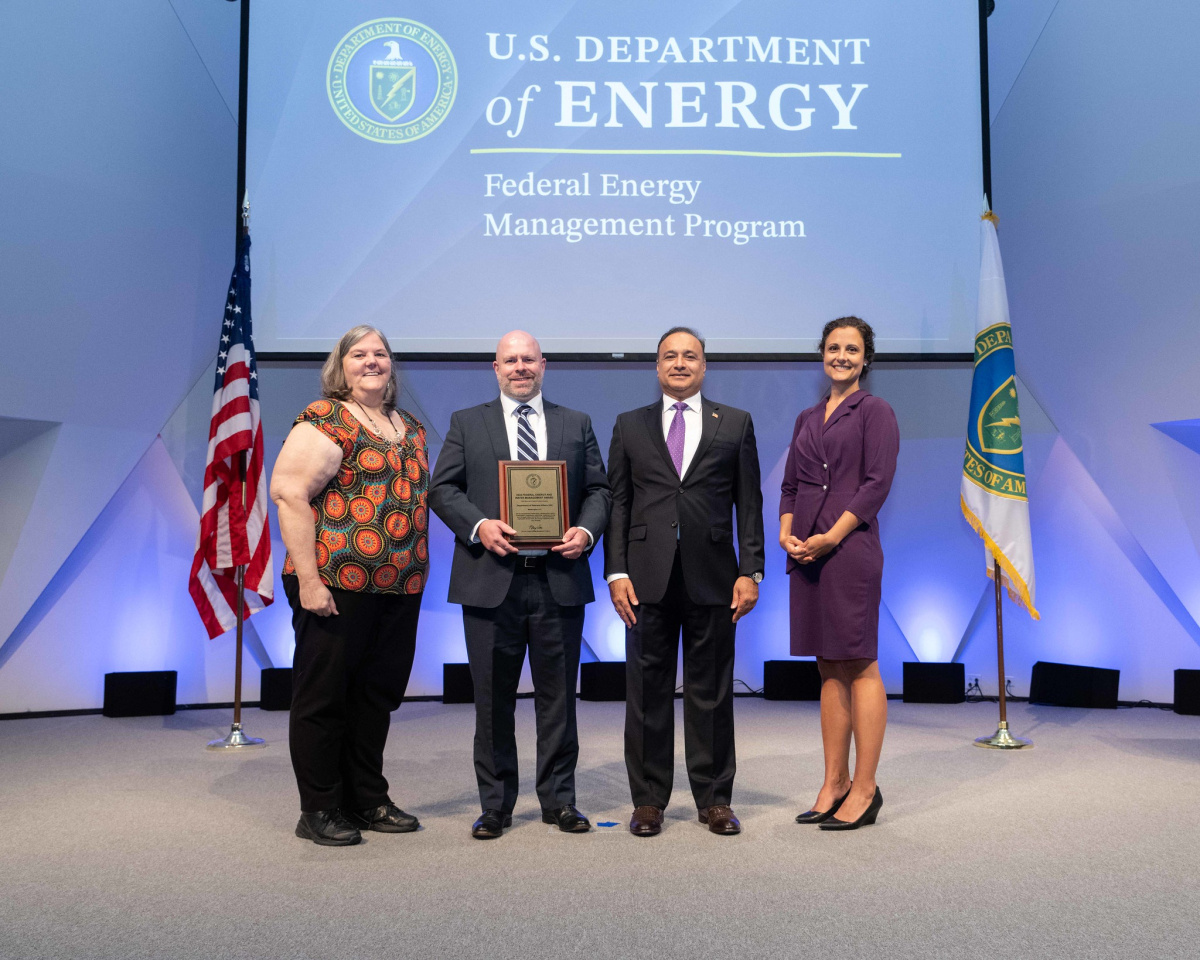The Federal Energy and Water Management Awards celebrate federal individuals, groups, and agencies for their outstanding contributions within the federal government operations and facilities that cut energy and water waste, saved taxpayer dollars, and advanced America’s progress toward energy dominance.
U.S. Air Force - Steven Smith
Steven Smith is an electrical engineer and energy program manager for the Headquarters Air National Guard (ANG) Civil Engineering Technical Branch. Smith began his career in 1984 as a systems electrical engineer officer at Scott Air Force Base, where he engineered electrical infrastructure supporting ground communications electronics facilities and space-based satellite systems to withstand catastrophic failures. Today, he serves as lead coordinator for ANG’s $28 million energy program spanning 50 states, four territories, and 99 installations. Smith’s leadership of ANG energy resilience opportunities, mission threat analyses, climate resilience programs, the Energy Resilience Conservation Investment Program (ERCIP), vehicle charging stations, ANG installation energy plans, and energy resilience readiness exercises spurred numerous Fiscal Year 2023 accomplishments. Highlights include deploying $4.1 million in vehicle charging infrastructure across seven installations, securing over $60 million in ERCIP funding to support microgrids at six bases, managing energy and water projects exceeding $34 million across 21 installations, reducing ANG energy and water use intensity, and championing the U.S. Department of Defense’s first geopressured geothermal system power plant, which culminated in a 2024 contract award.
U.S. Army - Melanie Johnson
Melanie Johnson has made a lasting impact on how the U.S. Department of Defense (DOD) bolsters energy resilience at installations via microgrid technology. Specifically, Johnson has shaped how the U.S. Army will build the 130 microgrids required by the Army Climate Strategy 2035 and, through joint-service partnership, how the U.S. Navy meets its analogous requirements. She is a founding member of the Army’s only installation microgrid research group, formed in 2008 when she joined the U.S. Army Engineer Research and Development Center’s Construction Engineering Research Laboratory (ERDC-CERL). For DOD’s early microgrid demonstrations, Johnson was key in achieving cybersecurity Authority to Operate, establishing new contract evaluation criteria, and developing business cases for DOD investment in energy resilience technology. As DOD microgrid projects moved from experimental to mainstream, she served on U.S. Army Corps of Engineers project delivery teams that consulted on Army, Navy, and Air Force microgrid projects. Through her guidance, direction, and concerted efforts, ERDC-CERL now plays a central role in defining DOD’s Energy Resilience and Conservation Investment Program microgrids for installations within and outside the continental United States.
U.S. Army - William Lucas
William Lucas has demonstrated exceptional meritorious achievement over 15 years of service focused on energy management at Joint Base Myer–Henderson Hall. He has greatly impacted the energy program, improving the efficiency and resilience of critical energy, water, and mechanical systems for Arlington National Cemetery and Fort McNair—key military installations that support ceremonial and security missions in the capital region. Leveraging his knowledge of regulatory processes, Lucas secured higher official approvals, engaged the local utility, and obtained funding approval for numerous energy conservation and utility resilience projects. He established building energy monitors across a large, diverse historical area, instituted retro-commissioning for two barracks buildings, constructed central chilled water plants, implemented solar generation, and championed the base’s participation in a demand curtailment program, resulting in 5 years of reimbursement from the utility. His ability to motivate field personnel through educational and technical support has driven significant efficiencies and ensured they are maintainable. In 2022, Lucas established the Installation Energy and Water Plan, setting a path for the base to meet and exceed its energy goals.
U.S. Army - Ryan Hernandez
Ryan Hernandez has devoted 17 years in the U.S. Army Energy Program to improving energy and water efficiency and resilience at the installation and Command Headquarters levels. Hernandez first contributed to a successful installation energy program in technical and supervisory roles at Fort Cavazos, Texas. More recently, he has served as Installation Management Command (IMCOM) energy division chief, providing all 104 installations in IMCOM’s purview with programmatic and technical support on energy and water resilience, efficiency, and affordability. Since Fiscal Year (FY) 2021, Hernandez has tripled the size of his team, ensuring installations have the resources and support needed to compete for finite program funding and implement projects. In FY 2023, IMCOM’s Energy Division obligated more than $363 million for projects across installations, marking an increase of 142% over 2 years. Hernandez has also ushered in significant operational improvements. Most notably, he promoted the development, use, and refinement of the Centralized Army Project Tracking and Utility Resilience Engine data visualization tool, helping streamline and optimize decisions about future projects and priorities at IMCOM and the installations it serves.
U.S. Department of Energy - Erin Hope
Erin Hope’s two decades of service at Bonneville Power Administration (BPA) are punctuated by outstanding achievements in advancing energy efficiency. Hope’s partnerships with BPA’s facilities team have led to electricity savings of 1.8 MW over his career. He also works directly with external facilities across the federal government and the Pacific Northwest to identify and implement energy efficiency solutions, and the Energy Efficiency Engineering Services Group he manages developed an internationally recognized protocol to measure and verify energy savings. By identifying a way to pump water using less energy, Hope’s team facilitated an 18% increase in efficiency on average from federally owned irrigation systems, helping combat the effects of drought in the region. Hope also leads research, development, and demonstration of new technologies, and his team has rolled out roughly $122 million in related incentive programs to regional utilities, saving 46 MW of electricity over the last year alone. Hope has received six internal awards for his longstanding commitment to advancing energy efficiency, fostering a culture of innovation and collaboration, mentoring staff and interns, and guiding the next generation of energy efficiency engineers.
U.S. Department of Veterans Affairs - John Poshka
John Poshka launched his federal career at the U.S. Military Academy at West Point in 2002, serving as director of public works and industrial hygienist. In 2009, he joined the Erie Veterans Affairs Medical Center (VAMC), where he steadily increased the efficiency of environmental operations as Green Environmental Management Systems manager. Under Poshka’s leadership, the Erie VAMC became a model for sustainable operations, consistently earning Top 25 awards from Practice Greenhealth, which recognizes hospitals nationwide for excellence and leadership in categories including solid waste, regulated medical waste, recycling, and water. In Poshka’s 15-year career, he spearheaded significant water and energy management process improvements at the Erie VAMC, including a server room cooler retrofit that saved 777,600 gallons of water and $7,270 annually, and a boiler replacement project that saved 1.5 million gallons of water and over $15,000 per year. A highly regarded subject matter expert and mentor, Poshka served as a Veterans Health Administration mentor, Greenhealth application reviewer, and Technical Career Field (TCF) program preceptor. His 2024 TCF trainee is ranked number one in his program.
U.S. General Services Administration - Steve Rutledge
Leveraging decades of experience and leadership, Steve Rutledge has established himself as a performance contracting and energy expert at the General Services Administration (GSA). As the performance contract manager for GSA Region 7 since 2018, he has strategically reduced utility use in the region through outside-the-box approaches that have yielded significant cost savings for taxpayers. Rutledge and his team have been integral to Region 7’s success in developing its energy savings performance contract (ESPC) and utility energy service contract (UESC) portfolio, which comprises eight projects across eight states. His innovative contributions to Region 7’s flagship UESC/ESPC project included integrating a battery energy storage system. That project set the standard for Region 7’s UESC/ESPC program, providing a framework for future projects. Through his hard work, dedication, and strong professional relationships, Rutledge facilitated the implementation of energy and water conservation measures at more than 69 assets in Region 7 and neighboring states, contributing to projected savings of 200,000 MBtu, 52,000 kgal, and $4.5 million annually.
U.S. Navy - Matthew Tropiano
As Region Energy Program Manager for Commander Navy Region Europe, Africa, Central (CNREAC), Matthew Tropiano has helped advance energy and water projects through the U.S. Navy’s Energy Project Selection Process and execution of funding by identifying requirements consistently year after year. For Fiscal Year (FY) 2025, three Energy Resilience and Conservation Investment Program (ERCIP) projects, totaling $60 million, were selected by the Office of the Secretary of Defense. In 2024, Tropiano coordinated multiple successful efforts, including application of the National Renewable Energy Laboratory’s REopt® tool in Bahrain, Naples, and Sigonella to identify, optimize, and maximize cost-effective distributed energy resources at those installations to enhance resilience. His efforts on training, education, and energy awareness at CNREAC have supported the development of energy managers and the importance of the energy program by ensuring no vacancies across this region. Over the course of his career, Matthew has served as an energy champion and continues to advance initiatives in direct support of the Navy’s Energy Program.
U.S. Army - Contracting Support in Testing of Fort Riley’s Emergency Substation Generation Plan
Martha Gray, Larry Graham, Michael Kerr, Jeff Williamson, Justin Wingo
Over 13,700 active-duty service members are assigned to U.S. Army Garrison Fort Riley, Kansas, with more than 15,000 family members and approximately 5,000 civilian employees who live in the region and/or work at the post. As a pillar of support for U.S. national defense, resilient energy is key to ensure Fort Riley can withstand power outages and continue to maintain and rapidly deploy critical combat ready forces. In Fiscal Year 2023, the Defense Logistics Agency’s Energy Contracting Office was instrumental in supporting Fort Riley’s energy resiliency efforts through validation of the Directorate of Public Works (DPW) Emergency Response Plan. The contracting officer used innovative contracting methods to allow DPW to test an emergency substation generation plan that would ensure critical facilities could still operate under a prolonged outage and help save the installation from costly financial damages. The test validated DPW’s Emergency Response Plan and the use of large-scale mobile generators for whole substation generation, providing a real-world example of emergency processes and procedures validation that can be replicated across the Army.
U.S. Navy – Navy Energy Resilience Conservation Investment Program P-950 Camp Lemonnier Djibouti
Knud Hermansen, Kevin Ngo, Jeremy Potts, Matthew Tropiano, Mina Yousef
In 2024, Camp Lemonnier Djibouti (CLDJ), the U.S. Navy’s only installation in Africa, was awarded a $16.7 million Energy Resilience Conservation Investment Program (ERCIP) project. Involving multiple energy conservation measures (ECMs), this project will significantly increase energy security, controls, and efficiency for the installation, located in a highly operational region for our armed forces. The only option at the time for the Navy to execute these ECMs was to pursue ERCIP funding, which took years of planning by the project team. This effort now serves as an example of how installations can continue pursuing energy projects even when traditional methods of funding and contracting are not viable. In development since 2020, this project involves installation and integration of a secured facility-related controls system (FRCS), cyber-securing and integrating existing FRCSs, and designing and building ECMs to reduce energy consumption and operations and maintenance costs at the prime power plant in CLDJ. It will also repair and modernize existing facilities, resulting in further energy and cost savings. The project has a savings-to-investment ratio of 2.32, indicating a strong return on investment.
U.S. Navy - Navy Shore Type-Command (Commander, Navy Installations Command) Energy Program Research, Training, and Education
Keith Benson, Eric Hahn, Guy Warner
In Fiscal Year 2024, the Naval Postgraduate School and Pareto Energy LTD executed a pioneering Cooperative Research and Development Agreement (CRADA), leveraging it to create an innovative research, training, and education project for the U.S. Navy Shore Type-Command (TYCOM) Navy Energy Program, also known as Commander, Navy Installations Command (CNIC). This initiative aims to enhance operational effectiveness and technological leadership by developing new intellectual capital to overcome performance contract barriers and apply innovative energy procurement techniques. The CRADA has a focus on the distributed utility concept of operating a defense community integrated energy system, an approach that supports resilient, flexible, and secure naval shore operations. The research, training, and education from the CRADA will be institutionalized through the newly established Navy Shore TYCOM Energy Certificate Program and corresponding Navy Shore TYCOM Energy Senior Manager Short Course. These resources will educate CNIC installation and region energy managers, public works professionals, and other key defense community stakeholders on essential modern energy technologies, systems, and business approaches to ensure reliable and affordable power for the shore enterprise. This research and education will help overcome barriers to delivering high-performing microgrid projects aboard naval installations.
U.S. Army - Minnesota Army National Guard Sustainability Program
Justin Knippel, Shawn Manke, Adam Riedel, Lori Ruff, Zachary Sonntag
The Minnesota Army National Guard (MNARNG) comprises 11 major commands across Minnesota, supporting about 13,000 soldiers and airmen. Resilience is critical to MNARNG’s dual mission serving the nation through homeland security and defense and serving Minnesota in response to domestic disasters and emergencies. To support and sustain the mission, MNARNG’s Campaign Plan prioritizes energy, water, and waste reduction to boost facility resilience. In Fiscal Year (FY) 2023, solar energy systems generated more than 1 million kWh of electricity across nine facilities, saving over $134,000 in energy costs. MNARNG has also secured $200,000 in funding to install 18 vehicle charging stations at Camp Ripley Training Center. MNARNG’s Facilities Management Office conducted assessments with cities that revealed lower stormwater fees at assessed facilities, including a 50% reduction at the Duluth Training and Community Center. Finally, MNARNG’s 2023 Recycling Challenge yielded a 23% waste diversion rate, up 11% from before the challenge. Overall, MNARNG’s strategic, hands-on approach to energy, water, and waste reduction has translated to increased resilience, avoided disposal costs, and more effective use of MNARNG funds.
U.S. Army - U.S. Army Garrison Daegu – FEMP Energy and Water Management Program
Yun Chunsong, In Ki Hong, Joo Im, Chon Kim, Kyong Min Kwon
U.S. Army Garrison (USAG) Daegu Directorate of Public Works (DPW) has achieved monumental success in its pursuit of energy and water conservation, exceeding federal and Army goals. Through innovative approaches, strategic actions, and collaborative partnerships, DPW has improved the sprawling installation’s energy and water efficiency while enhancing operational readiness. Implementing cost-effective electricity sources and energy efficiency measures such as retrofitting heating equipment, installing solar tubes, and upgrading the electrical distribution system has yielded significant results. Highlights include reducing energy consumption by 28% and water usage by 37%, surpassing targeted reductions of 20% and 32%, respectively. The energy and water conservation program has also generated substantial cost savings, including $17,000 in annual savings from the repair of a water leak and $300,000 in avoided costs from in-house corrective measures. USAG Daegu’s commitment to energy and water conservation contributed to it earning the title of Second-Best Garrison in Fiscal Year 2023. In addition to demonstrating the installation’s success in increasing resilience, enhancing security, and supporting Army readiness in South Korea, these achievements have solidified USAG Daegu’s position as a leader in sustainability and environmental stewardship.
U.S. Army - U.S. Army Garrison Fort Riley Energy Management Program
Hadassa Baker, Larry Graham, Michael Kerr, Daniel McCallister, Jeff Williamson
U.S. Army Garrison Fort Riley, Kansas, home of the Army’s 1st Infantry Division energy program, has achieved remarkable success in driving significant energy and water efficiency improvements in while also enhancing resilience across the installation. Through a comprehensive approach integrating advanced technologies, behavioral change initiatives, and strategic partnerships, the program has yielded substantial reductions in energy and water consumption. Specifically, the installation realized a 15% decrease in energy usage intensity in Fiscal Year (FY) 2023 from the FY 2015 baseline. The main driver of this reduction was an energy savings performance contract. From FY 2018 to FY 2020, that project implemented energy conservation measures at 450 buildings across the installation, including lighting and streetlight retrofits; water conservation and infrared heating system improvements; upgrades to the central chiller plant and building heating, ventilation, and air conditioning controls; and retro-commissioning. Moreover, by implementing courses of action identified in the installation energy and water plan completed in 2020, Fort Riley has promoted energy-efficient practices among personnel and increased its operational efficiency, readiness, resilience, and mission effectiveness.
U.S. Navy - Navy Energy Program, Navy Installations Command
Keith Benson, Chris Casne, Scott Gray
For almost 10 years, Commander, Navy Installations Command (CNIC) has led and managed the U.S. Navy’s Energy Program through a culture of energy excellence across 70 Navy installations and 10 Navy regions by establishing processes aligned to policies that support warfighters, implementing a more than $300 million annual budget focused on developing tools and capabilities to implement energy/water security standards through the Installation Energy Program Summary (IEPS) Framework. The Navy Energy Program continues to innovate across diverse acquisition strategies and partner with communities, utility providers, systems commands, and contractors across a more than $10 billion project portfolio. Opportunities include distributed energy resources, solar hot water systems, energy efficiency and deep energy retrofit assessments, and photovoltaic microgrids with battery storage. In Fiscal Year (FY) 2017, the CNIC Energy Program successfully integrated all data into the IEPS Toolsuite for a centralized web-based data collection and reporting tool, providing enhanced real-time visibility into Navy energy and water programs around the world; enabling the Navy to more effectively identify mission gaps, save energy, prioritize solutions, and deploy available energy funding for positive returns on investment, reinvesting more than $85 million in energy projects using 10 U.S.C 2912 authority. The improvements yielded a more integrated, installation-focused program with significant reductions of 10.2% in energy consumption and 19.2% in utility costs, while also supporting more than 40 Navy Black Start Exercises since FY 2021. These substantial gains in energy security include energy savings and enhanced efficiencies, resilience, and reliability, directly supporting Navy fleet military readiness and operations around the global shore enterprise.
U.S. Air Force - Energy Savings Performance Contract Yokota Air Base, Fussa, Japan
Dean Andrews, Mark Dent, Klaus Guenther, George Matusak, Michael Ringenberg
In Fiscal Year (FY) 2023, Yokota Air Base (AB) completed construction of a $167 million energy savings performance contract (ESPC), bolstering resilience and enhancing energy efficiency at the base, which is a key hub for all operations in Japan, as well as some in the Republic of Korea. This is the first ESPC in the U.S. Air Force to deliver full on-base power generation capabilities. The project provides a 10.72-MW natural gas cogeneration plant, which allows the base to remain operational during outages. With 18 energy conservation measures (ECMs)—including upgrades to four central steam plants and enhancements across 600 facilities—the ESPC also achieves substantial energy and cost savings. During FY 2023, the ECMs implemented provided 196,244 MBtu in energy savings, resulting in over $5.9 million in utility bill savings. They also provided 22,423 kgal of water savings, resulting in $195,437 saved. Yokota AB has established a model for integrating energy resilience and efficiency into Air Force operations, documenting lessons learned to pave the way for similar power grid architecture at other installations.
U.S. Air Force - Energy Savings Performance Contract Joint Base McGuire-Dix-Lakehurst, McGuire Air Force Base, New Jersey
Dean Andrews, Christopher Archer, Alexander Vincent, Michael Ringenberg, Paul Wenner
In Fiscal Year (FY) 2023, Joint Base McGuire-Dix-Lakehurst (JBMDL) completed construction of the first phase of a $48 million energy savings performance contract. This project installed 17.7 MW of roof-mounted solar photovoltaics across 36 facilities, leveraging financial mechanisms to secure $34 million in savings over 22 years and generate $2 million annually to fund future phases. Phase II, partially completed in FY 2023, introduced further upgrades, including 13.7 MW of ground-mounted solar, a 2-MW battery storage system, and microgrid capabilities to strengthen resilience and support JBMDL during outages. The second phase also includes energy conservation measures, involving upgrades in over 400 buildings in FY 2023, enhancing transformers, lighting, energy management control systems, and heating, ventilation, and air conditioning. Both phases resulted in combined FY 2023 utility bill savings of about $2.7 million. The project will provide a 22% reduction in energy consumption across JBMDL, saving over 250,000 MBtu annually. The use of innovative financing and scope to bolster both efficiency and resilience can serve as a model across the U.S. Air Force for microgrid projects.
U.S. Army - Cascading Water Use at a Wastewater Treatment Plant
Ashton Banks, Lane Bomar, Sylvia Farmer, Darneisha Price, Christopher Woodruff
Fort Irwin and the National Training Center in southern California provide state-of-the-art warfare training to brigade combat teams. Located in an area with limited annual rainfall, Fort Irwin is improving water efficiency at its wastewater treatment plant through a cascading water management system. This system allows water to be reused in processes with a lower quality requirement, and the project is anticipated to extend Fort Irwin’s water supply by 1 year for every 12 years of operation. In August 2023, Fort Irwin converted the majority of process water used at its wastewater treatment plant from potable water to recycled water. In the 12 months since the conversion, the project has saved more than 40 million gallons of treated potable water. First-year cost savings were $412,854, and future savings are estimated to be more than $450,000 per year, with an estimated project payback of less than 4 years. The water treatment plant treats less water each day, extending the life of the equipment and reducing operation and maintenance costs.
U.S. Army - Power Reliability Enhancement Program, U.S. Army Corps of Engineers Black Start Exercise
Jack Beverly, Alexis Jones, Jay Jung, Saul Martinez, Andrew Stringer
The U.S. Army Corps of Engineers Power Reliability Enhancement Program (PREP) is helping to advance energy resilience and security at military installations across the country and overseas through the Black Start Exercise (BSE) Program. In Fiscal Year (FY) 2023, the PREP team conducted exercises at five installations and planned for the execution of seven in FY 2024. The Office of the Secretary of Defense funded approximately $500,000 to conduct each exercise. In FY 2023, PREP conducted all five exercises for less than $800,000, a cost savings of over $1.7 million for the Army. In FY 2024, costs averaged $200,000 per exercise, a savings of over 45% or $1.4 million. The PREP team developed and utilized a standardized process for exercise execution and documentation, saving exercise costs while consistently producing quality, repeatable, actionable exercises and corrective plans. The BSE Program identifies and addresses energy vulnerabilities, with many recommendations immediately helping improve installation resilience in outages. The team’s ability to execute quality exercises at a low cost has led to other federal agencies requesting PREP’s services.
U.S. Department of Commerce - National Institute of Standards and Technology Boulder Wing 5 Renovation Leadership in Energy and Environmental Design Gold Project
Jason Boyd, Benjamin Bullock, Brian Burnham, Allen Cook, Ruben Rodriguez
The National Institute of Standards and Technology (NIST) in Boulder, Colorado, has completed a major renovation of a 76,500-square-foot research facility, earning Leadership in Energy and Environmental Design (LEED) Gold certification for its sustainable design and operation. The renovation incorporated energy-efficient mechanical and electrical systems, significant water conservation measures, and an innovative design that preserved the building’s historical character while modernizing it to support cutting-edge research. Other key renovation measures included maximizing natural daylighting; installing indoor and outdoor LED lighting; upgrading from steam baseboard heating to low-temperature hot water heating; and implementing a variable volume outside air system for maximum comfort and ventilation and minimum energy usage. Additional improvements featured high-efficiency triple-pane windows, enhanced insulation of the building envelope, advanced building automation system controls, and ultra-low-flow plumbing fixtures. The results are substantial: a projected annual savings of 2,876.4 MBtu in energy (a 19.4% reduction) and 111,000 gallons of water (a 41.1% reduction). In addition to these resource savings, the project also prioritized occupant comfort and wellbeing. Outdoor courtyard spaces, complete with rain gardens to manage stormwater runoff, reinforce the connection between NIST and its iconic landscape at the foothills of the Rocky Mountains, fostering creativity and collaboration.
U.S. Department of Commerce - U.S. Patent and Trademark Office Data Center Relocation Project
Jeff Forsyth, Ian Neil, Morris Pearson, Robert Simms, Deborah Stephens
The U.S. Patent and Trademark Office (USPTO) significantly improved its operational efficiency by relocating its data center to a modern colocation facility. The project team employed computational fluid dynamics analysis to meet or exceed ASHRAE Technical Committee 9.9 best practices for data center efficiency. The move reduced the data center’s physical footprint from 32,000 to 10,000 square feet and cut electricity usage by more than two-thirds—from 1,093 kW to just 355 kW per month. With support from Iron Mountain Data Centers, the colocation facility enables the USPTO to lease space for its computing equipment and allows flexibility for future growth. The transition mitigated risks associated with flooding and aging power infrastructure, while allowing the agency to leverage modern technologies, server consolidation, and a highly efficient data center environment powered by renewable energy with grid backup power redundancy. Worker comfort also improved with a new hot air containment system, enabling an ambient temperature of 72 degrees without compromising equipment safety.
U.S. Department of Energy - Fermilab Helen Edwards Engineering Research Center
Gary Brown, Sheila Feddis, Steve Neus
Completed in 2023, the 80,000-square-foot Helen Edwards Engineering Research Center at Fermi National Accelerator Laboratory includes modular labs, high-bay areas, and flexible office and meeting spaces—serving as a model for co-locating science, technology, and collaboration to advance research breakthroughs. Designed with efficiency in mind, the site features native, drought-tolerant landscaping that negates the need for irrigation. A 20,000-square-foot green roof captures rainwater, which flows into a bioswale and pond, then recirculates it for fire protection and industrial cooling. Along with low-flow indoor fixtures, these strategies make the building 35% more water efficient than standard facilities. Energy-saving elements include facade overhangs that block summer sun, reducing cooling loads, and high clerestory windows paired with horizontal light shelves that direct daylight deep into the interior, minimizing the need for artificial lighting or heating. LED lighting, occupancy sensors, and advanced building automation controls support smart energy use. Together, these innovations save an estimated 3,700 MBtu of energy and 500,000 gallons of water per year.
U.S. Department of Veterans Affairs - Installation of Trihalomethane Removal System Water Quality Improvement Project
Gabriel Calderin-Vazquez, Sixto Diaz-Ortiz, Jose L. Perez-Velez, Wilfredo Quinones, Rivera Veda-Cruz
The Veterans Affairs Caribbean Healthcare System (VACHS), which serves veterans in Puerto Rico and the U.S. Virgin Islands, has implemented a water quality and infrastructure improvement project featuring an innovative system that reduces disinfectant byproducts (DPBs) in drinking water. These harmful compounds—such as total trihalomethane and haloacetic acids—can form when disinfectants react with organic matter. While targeting DBP reduction, the system also ensures adequate disinfection to prevent Legionella bacteria. Key improvements include enhanced tank mixing, reduced water aging and stratification, and new exhaust and supply fans on the water tanks. The system has exceeded its goal of removing 65% of the total trihalomethane. Additionally, it generates annual savings of $75,000 by lowering costs related to maintenance, repairs, cleaning, chemical use, and filter replacement. VACHS is the first facility in both Puerto Rico and in the U.S. Department of Veterans Affairs nationwide to implement such a system. The project demonstrates a practical, cost-effective solution for facilities facing similar water treatment challenges.
U.S. Marines – Marine Corps Air Station Cherry Point Energy Security and Resiliency Infrastructure Project
Craig Frank, Kenneth Greene, Gary Jackson, Jeffrey Jasinski, Ralph Merrill
Marine Corps Air Station Cherry Point, an all-weather jet base with a massive runway system, is home to the 2nd Marine Aircraft Wing and Fleet Readiness Center East. Given its complex missions—including providing combat-ready aerial operations and unique littoral training—as well as threats like hurricanes and cyberattacks, the project team prioritized modern technologies to improve energy security, resilience, and operational efficiency. A key achievement was the standardization and modernization of building control systems across more than 100 facilities spanning 29,000 acres. Additional measures included electrical upgrades; heating, ventilation, and air conditioning upgrades; and lighting system upgrades, along with water and sewer system improvements to manage low-flow conditions and storm water during emergencies such as storm surges and hurricanes. These efforts significantly enhanced energy and water resilience, setting a benchmark for other Marine Corps installations. In Fiscal Year 2023 alone, the project reduced energy use by 90,593 MBtu, saving more than $2 million in energy costs, and cut water consumption by 140 million gallons.
U.S. Navy - Navy Installation Islanded Microgrid – Naval Submarine Base New London
Kenneth Curtin, Philip Damicis, Christopher Mason, Andrew Shetland, Joseph Sprague
An innovative microgrid has greatly enhanced the power diversification of U.S. Naval Submarine Base New London, transforming its electrical infrastructure into a smarter, more flexible system while addressing critical resilience, reliability, and security issues. Beyond the microgrid’s capabilities for automated data collection and precise peak-demand management, the system was originally designed to seamlessly disconnect from the public utility grid during power interruptions or outages and dispatch on-site power generation for mission-critical loads. Today, the microgrid powers the entire base, including moored submarines. It incorporates advanced technologies such as fuel cells and a 10.75-MW combined heat and power plant. In its first year of operation, the system delivered $8 million in savings, with a net energy reduction of 162,800 MBtu and the conservation of 3.6 million gallons of water.
Award Winners' Ceremony
The 2024 award winners were honored in person on August 7, 2025, at the National Academy of Sciences in Washington, D.C., at a private ceremony and reception.
Download the posters highlighting the 2024 award winners.
Video courtesy of the U.S. Department of Energy. View the video transcript.


